Have you ignited your Power Rangers?
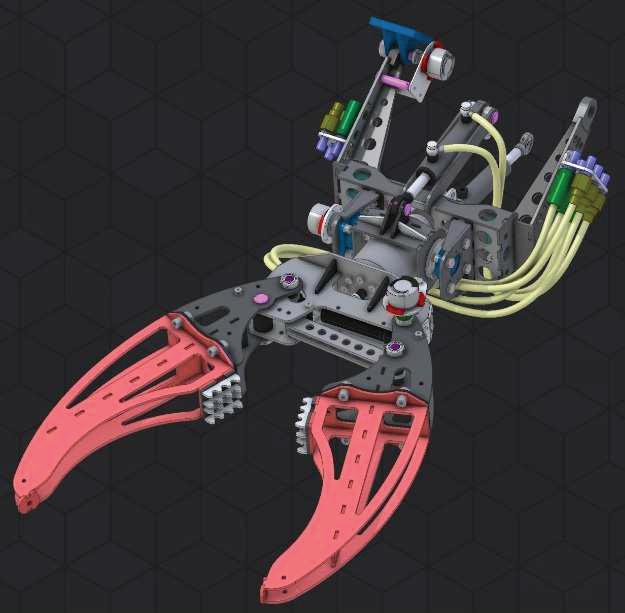

World Class Applies to Government Too!
-Ian
Walsh, Partner, Argon & Co





Over the last few years, I have written about the need for business, government, and educational institutions to come together to address NZ’s productivity crisis. Recent actions by government show the extent of the work to be done. Funding has been cut for trade training and apprenticeship funding (TTAF) and fees free funding is nigh on impossible to access if you have ever done any level 3 or above training or a degree anywhere.




These funds have now been redirected to universities to help with their funding gaps due to lower overseas enrolments etc. Whilst I understand the need to support institutions through this post covid period as they re-establish their new reality and business models it should not be at the expense of training and developing our future leaders in productivity!

It is instructive to note that the UK is funding productivity training directly and reviewing university funding based on contribution to the economy.
Of course, this creates arguments about how you value this, but the UK is clearly prioritising the need to build capability to ensure they can be more productive and competitive in future. They have stiff competitors, Ireland is setting new benchmarks, Brexit has challenged traditional relationships.
It could be argued this is not relevant to NZ so for a more local comparison, Australia. On a per head basis, they train twice as many people in post graduates diplomas as we do!
Over 15 years ago the UK drove the adoption of lean as a key strategy of Highways England, with documented savings as an outcome. Over the last few years, they have delivered significant projects on time and on budget with billions of pounds of savings.

The key point to this is government and the public sector demonstrating the application of “best practice” and requiring it in their major spends. This has driven adoption of best practice and lean construction throughout the contracting industry.

As we face into large infrastructure investment, surely, we would do the same thing?
It was both encouraging and disappointing to read the latest activities in central and local (Auckland) government with the desire to adopt fiscal review committees to ensure all proposed spending was appropriate and properly challenged. This is good governance and great to see this direction; of course, disappointing this wasn’t being done before (else why introduce it?). However why couldn’t we go a further step and challenge all significant spends to adopt best practice, with set goals and approaches and savings targets?
continued on Page 8
SMART MANUFACTURING
SMART MANUFACTURING Showcasing the
manufacturing. SUSTAINABILITY Laminex’s sustainability strategy focuses on ‘what matters’. www.nzmanufacturer.co.nz August 2023 11 18 enquiries@baycad.biz www.baycad.biz NZ 0274847464 AU 64274847464 Aust/NZ Region Don’t delay, contact us now. Free trial available 30 Days, No Restricons Powerful, yet easy-to-use, 3D CAD Soware that’s affordable. P CAD S N N “C” F
marvels of modern
Phone: 0800 655 465 Email: sales@acelink.co.nz Website: https://www.acelink.co.nz/mid-year-sale/
8
We need our elected representatives to stand up and lead the nation in up-skilling in productivity.

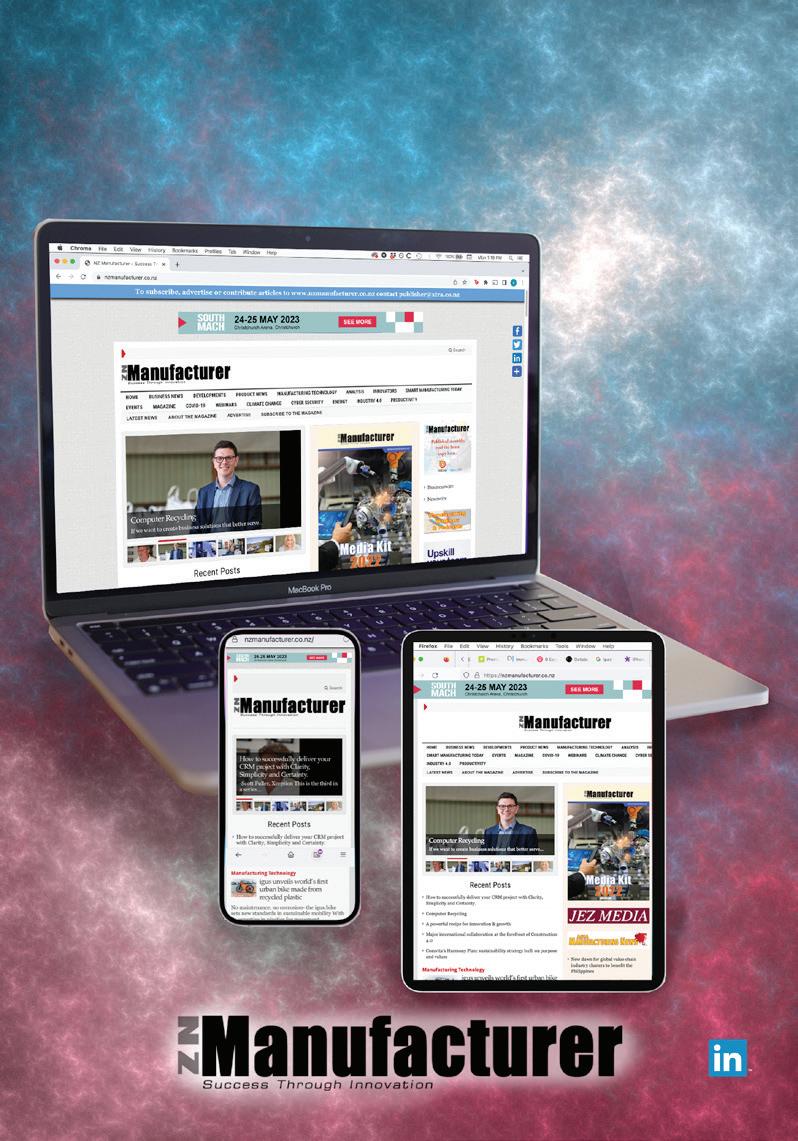
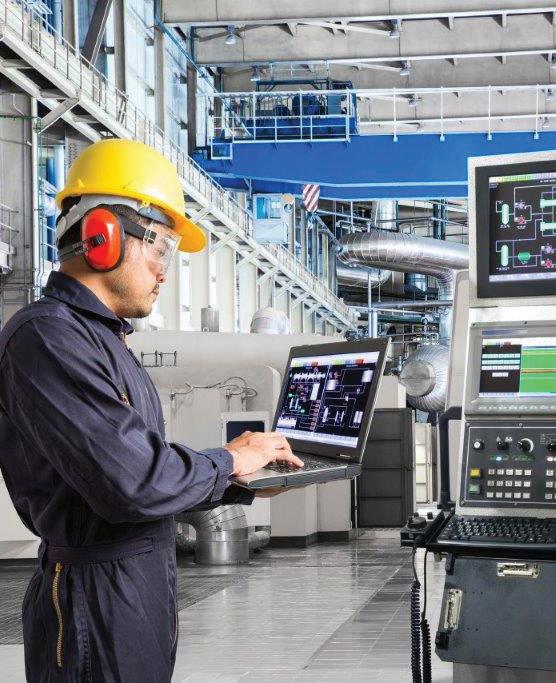














2023 Media Kit www.nzmanufacturer.co.nz For a copy of the NZ Manufacturer Media Kit 2023 email publisher@xtra.co.nz All articles are published at no charge, unless promoted (advertorial) content is required. Success Through Innovation asiamanufacturingnewstoday.com ASIA M ANUFACTURING N EWS 2023 Asia’s manufacturing future. MEDIA KIT Media Kit 2023 Innovation + Dedication = Success www.australianmanufacturingnews.com TechRentals® is an IANZ endorsed Calibration Laboratory We offer both IANZ Endorsed and Traceable Calibrations of test and measurement equipment inluding: 0800 832 473 www.techrentals.co.nz
DEPARTMENTS
LEAD
World class applies to government too!
BUSINESS NEWS
A data-driven approach to reducing operating costs.
Will digital enablement make our company less human?
SMART MANUFACTURING

Have you ignited your Power Rangers? How AI will transform manufacturing. Showcasing the marvels of modern manufacturing.
Fabrum and Chart Industries to manufacture Micro-Scale Liquefiers for hydrogen.
Advancing the aerospace sector in Aotearoa.
Maori in Engineering podcasts proving popular.
Expand your already reliable networks with ease.
SUSTAINABILITY
Laminex’s sustainability strategy focuses on ‘what matters’.
ANALYSIS
What is the future of work?
WOMEN IN ENGINEERING

Graduating from the ‘60s in engineering.
WORKSHOP TOOLS
Laser cutting quoting helps with tricky jobs.
E4Q e-chain with extender crossbar design
Full-Face protection with Zeta welding and grinding helmets
CASE STUDY
Sustainability software helps Fletcher Building make better decisions.
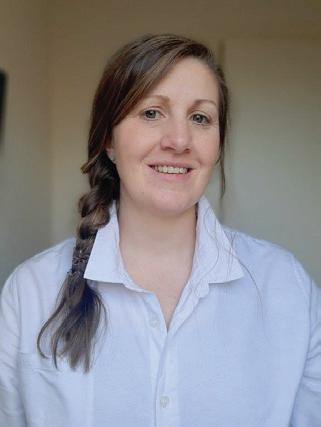

DEVELOPMENTS
The surprising ally shining a light on manufacturing and industry sector.
THE LAST WORD
Electrical apprentice challenge back for 2023.

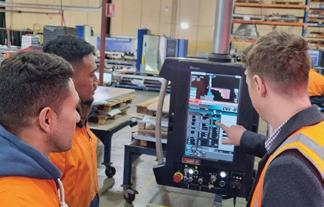
ADVISORS
Kirk Hope
Is Chief Executive of BusinessNZ, New Zealand’s largest business advocacy body He has held a range of senior positions at Westpac and is a barrister and solicitor

Ian is a Partner, Argon & Co. NZ, a master black belt improvement specialist and global lean practitioner. He is passionate about improving productivity and helping to create world class New Zealand businesses.

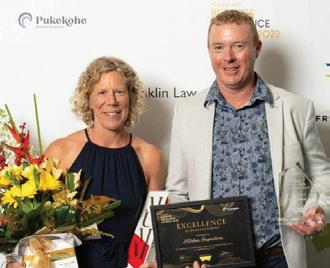

Barbara’s passion is to enable organisations to succeed sustainably. She describes her job as a ‘translator’ – translating sustainability into language that businesses can act on.
Lewis
Is Managing Director of Connection Technologies Ltd, Wellington and is passionate about industry supporting NZ based companies, which in turn builds local expertise and knowledge, and provides education and employment for future generations.

EMA chief executive Brett O’Riley has a background in technology and economic development. Brett actually grew up with manufacturing, in the family business, Biggins & Co. He currently holds board roles with Wine Grenade and Dotterel Technologies and is also on the NZ Film Commission board.


Insa’s career has been in the public and private sectors, leading change management within the energy, decarbonisation, and sustainability space. Insa holds a Chemical and Biomolecular BE (Hons) from Sydney University. She is a member of the Bioenergy Association of NZ and has a strong passion for humanitarian engineering, working with the likes of Engineers Without Boarders Australia.
Insa is a member of Carbon and Energy Professionals NZ, been an ambassador for Engineering NZ's Wonder Project igniting STEM in Kiwi kids and Engineers Australia Women in Engineering, increasing female participation in engineering.

NZ Manufacturer August 2023 / www.nzmanufacturer.co.nz 4 Contents 1 6 8 18 19 20 22 24 26 27
6 11 15 16 18 19 27
Brett O’Riley
Ian Walsh
oodward
Insa Errey
Dr Barbara Nebel CEO thinkstep-anz
PUBLISHER
Media Hawke’s Bay Ltd, 121 Russell Street North, Hastings, New Zealand 4122.
MANAGING EDITOR
Doug Green
T: +64 6 870 9029
E: publisher@xtra.co.nz
CONTRIBUTORS
Holly Green, EMA, Business East Tamaki, Ian Walsh, Dr. Barbara Nebel, Adam Sharman, Insa Errey, Scott Adams, Robert Le Busque
ADVERTISING
T: + 64 6 870 9029
E: publisher@xtra.co.nz
DESIGN & PRODUCTION
:kim-jean:
E: kim.alves@xtra.co.nz
WEB MASTER
Julian Goodbehere
E: julian@isystems.co.nz
PUBLISHING SERVICES
On-Line Publisher
Media Hawke’s Bay Ltd
DIGITAL SUBSCRIPTIONS
E: publisher@xtra.co.nz
Free of Charge.
MEDIA HAWKES BAY LTD
T: +64 6 870 9029
E: publisher@xtra.co.nz
121 Russell Street North, Hastings
NZ Manufacturer ISSN 1179-4992
Vol.14 No.7 August 2023
Copyright: NZ Manufacturer is copyright and may not be reproduced in whole or in part without the written permission of the publisher. Neither editorial opinions expressed, nor facts stated in the advertisements, are necessarily agreed to by the editor or publisher of NZ Manufacturer and, whilst all efforts are made to ensure accuracy, no responsibility will be taken by the publishers for inaccurate information, or for any consequences of reliance on this information. NZ Manufacturer welcomes your contributions which may not necessarily be used because of the philosophy of the publication.
TTAF- Our future leaders in Productivity

Ian Walsh Partner at Argon & Co has written extensively over the past few years about the need for business, government, and educational institutions to come together to address NZ’s productivity crisis.
Currently, funding has been cut for trade training and apprenticeships (TTAF) and redirected to universities to help with their funding gaps due to lower overseas enrolments. Ian says that “while I understand the need to support institutions through this post covid period, as they re-establish their new reality and business models, it should not be at the expense of training and developing our future leaders in productivity!”
Ian cites the example of the UK, which is funding productivity directly and reviewing university funding, based on contribution to the economy.
Or Australia, where on a cost per head basis, train twice as many people in post graduate diplomas as we do!
A brilliant, thought proving article which can be read in full on Page 1. Elsewhere in August issue, you can read How AI will transform manufacturing. In Australia the Government has announced a $15 billion National Reconstruction Fund (NRF), $1 billion of which will be dedicated to reinvigorating, accelerating, and building up advanced manufacturing capabilities (Page 9).
Doug Green Publisher
5 www.nzmanufacturer.co.nz / NZ Manufacturer August 2023
Success
Innovation Editorial
Through
A data-driven approach to reducing operating costs
Whilst global supply chains appear to be normalising post-Covid, manufacturers continue to face highly challenging cost environments driven by high inflation rates, wage inflation and high interest rates.
In New Zealand these cost pressures are compounded by high shipping costs and unfavourable exchange rates that impact New Zealand manufacturers’ price competitiveness and/or margins. All of which is contributing to a contracting in manufacturing performance in New Zealand and most of the world. In challenging times, most organisations look to reduce production costs and non-essential spending. However, too often we see organisations making knee-jerk approaches to cost cutting, resulting in short-term decisions that constrain their ability to improve or accelerate when the economic environment improves.
Whilst it may seem paradoxical, challenging cost environments can be the foundation of future growth, if managed through an evidence-based, future-focused approach.
In this article we will explore three key ways a data-driven approach to managing through challenging economic environments can help balance the need for short-term cost reduction with long-term performance.
Understand the true drivers of production costs
Most organisations already collect a huge amount of data at multiple stages of the manufacturing process. However, a significant proportion do not use this data to inform process efficiency, asset optimisation and waste reduction.
A data analytics approach that identifies trends in process, machine and people data can identify correlations between multiple factors that explain the drivers of production efficiency, bottlenecks or opportunities to optimise.
Having identified these drivers, scenario modelling can then be used to play out different combinations of variables identifying the optimal combination. For example, identifying the root cause of systemic asset failures, and modelling out an optimal maintenance schedule to mitigate future unplanned downtime.
Evaluate the true impact of cost reduction decisions
Building on the ability to understand the drivers
of production costs, a data-driven, evidence-based approach allows for the interrogation of cost reduction strategies to understand their true impact on production and prioritise them accordingly.
Too often, when facing challenging economic conditions, we see organisations prioritise short-term cost cutting measures that actually result in unintended longer-term costs or jeopardise strategic agility. For example, it is tempting to reduce headcount and the associated wage bill through redundancy or natural attrition.

However, data analytics have frequently shown a significant down-side to this approach resulting from higher overtime bills, not to mention the increased likelihood of absenteeism, quality failure and injury rates that occur as workers fatigue.
By taking a holistic, data-driven approach, cost reduction measures are able to be evaluated and prioritised based on their overall cost impact on the organisation, including their potential down-side impacts.
continued on Page 14
Creating
Business East Tāmaki (formerly the Greater East Tāmaki Business Association) is here to make it easier to do business; working alongside business leaders and property owners in the region on security, advocacy, development and growth.
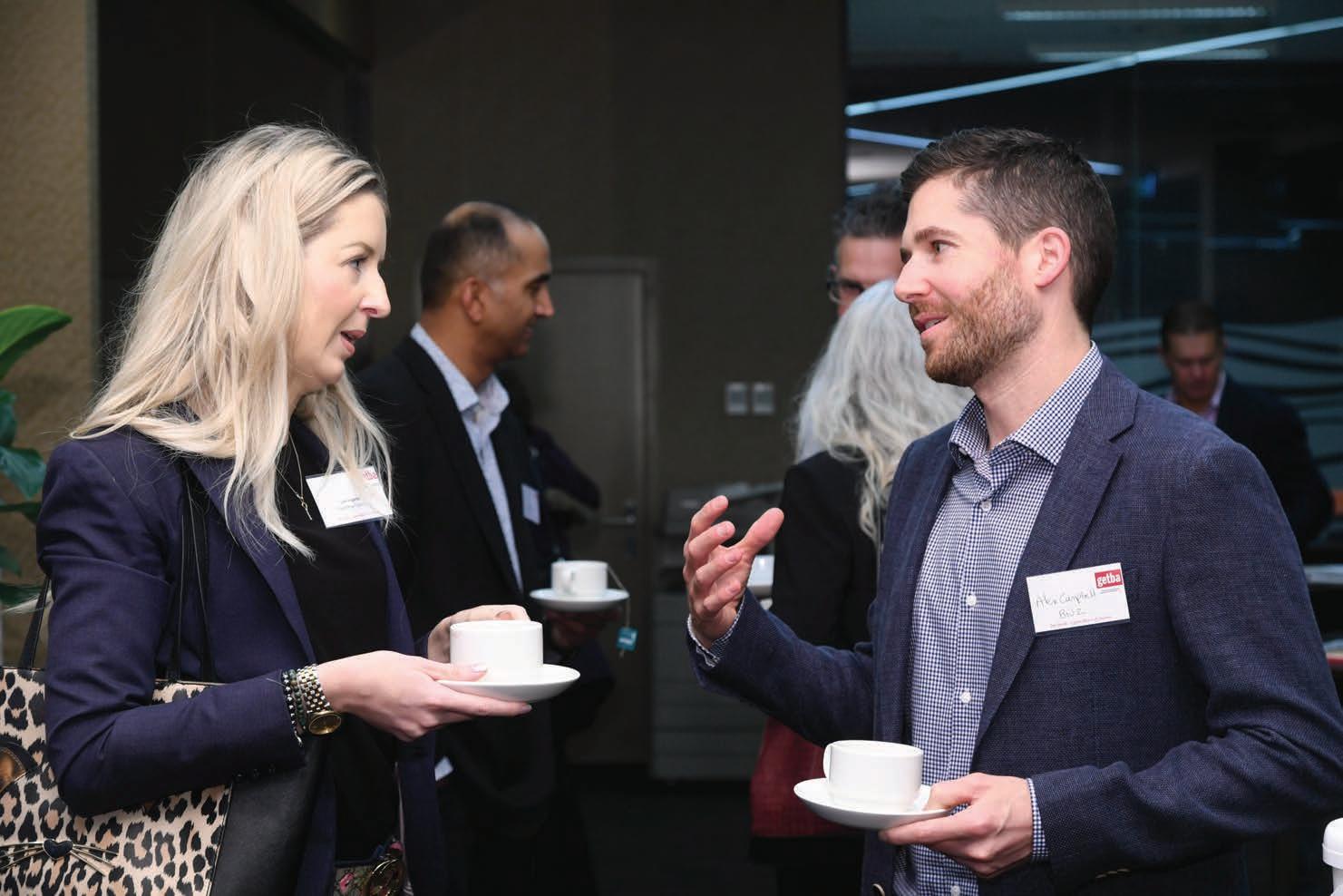
businessET.org.nz

opportunities for networking, learning, and engaging.
6 Business News
Adam Sharman
Business News
Will digital enablement make our company less human?
-Scott Adams, Argon & Co
The answer is a clear “no,” quite the opposite, as it will require clever design, selection, implementation, and maintenance. And if you have done it right it will provide you with more time to do human things like strategy, talking with clients and colleagues, and with increased overall productivity rather than less time working, and more time enjoying life.
The automation of routine, complex or dangerous activity is an inevitable and logical path forward for New Zealand businesses. We should be increasingly looking first to a digital solution for any problem or opportunity and always one that is easy to use and maintain.
For instance, there is a vast amount of software solutions that are easy to buy, and use, and if we have done well the software will even integrate with other software to digitally enable an end-to-end process. Therefore, we can make our working life much easier if we understand our business processes and therefore our requirements. Many of us in business are getting quite practiced at this new and necessary skill set.
Right now, depending on your role you are doing a good proportion of your work without having to think too hard. You, and NZ, would be better off if a larger proportion of our working time was spent thinking hard. Solving big problems, dreaming up new designs, creating rich content, crafting a chair, and writing songs. For most of us we would need that harder work compensated for with more rest and leisure time.
So, this might seem like a logical and forgone conclusion of increasing digitisation, but the journey and destination are not certain at a company level. It would be best to prepare well to approach this increasingly digital future with more confidence.
Firstly, start by educating the company as you should always be trying to improve your digital knowledge. But be selective, you cannot possibly be an expert across all digital domains. What is important to your role, your interests, and your capacity to absorb the knowledge? In any business there are three levels of digital education.
1. Operational level, where a good level of understanding is required for digital devices that are being used in the workplace. From laptops to machine control units, through to a level of understanding of how to maintain and repair digital devices, with the latter being an activity that can be outsourced.
2. Tactical level, who need a high level of digital understanding in order to best select and implement digital solutions, by effectively retrieving business requirements, evaluating digital options, and to project manage their implementation and then to get most out of the digital solution.
3. Strategic level, with accountability for the business direction taken, measuring performance, principles, values applied, and governance enacted.
Secondly, digital enablement is a form of business transformation, or at least a really good excuse for one. Preparation will include focusing on what the business is passionate about, so as to keep on track with that vision in order to reduce the noise, the convoluted and the unnecessary.


If it is to have any chance of success the first thing to focus on is the people, why do they work here and what will the company need to look like to keep them engaged?
Then understand the current process state to address the gaps to achieve a desired future state which will have improved connectivity of people, process, and systems including data.
Lastly, a digital enablement plan that reflects the nature of the company.
7
titleADVISORS
Sandra Lukey
Sandra Lukey is the founder of Shine Group, a consultancy that helps science and technology companies accelerate growth. She is a keen observer of the tech sector and how new developments create opportunity for future business. She has over 20 years’ experience working with companies to boost profile and build influential connections.


Mike Shatford is an expert in the field of technology development and commercialisation. His company Design Energy Limited has completed over 100 significant projects in this vein by consulting for and partnering with some of New Zealand’s leading producers.


Among Mike and his team’s strengths are industrial robotics and automated production where the company puts much of its focus.
Sean O’Sullivan
Has a B Com (Hons) Otago University. In 2000 - 2001 introduced PCs on the workshop floor and job and staff tracking and a productivity software App to Fletcher Aluminium Group and 100 manufacturers NZ nationwide.
In 2001 – 2022 Founding Director Empower Workshop Productivity & Scheduling Software App. 236 manufacturing and engineering clients mainly throughout NZ and Australia, also UK and US.
Iain Hosie
Iain Hosie is a respected figure in the NZ Advanced Manufacturing and Materials sectors, with extensive experience in product development, research projects and commercializing tech products. Iain is a Director and Founder of Nanolayr Ltd, Director for the NZ Institute for Minerals and Materials Research, Commercial Director for Fabribotics Ltd, and Executive Council of BiotechNZ.
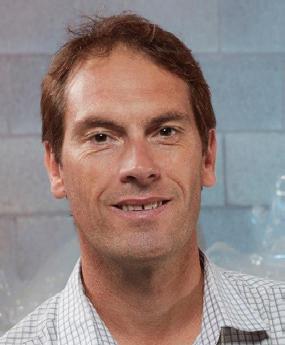
Have you ignited your Power Rangers?
-Insa Errey
Employees who are actively engaged in energy-saving initiatives can make a significant impact on energy reduction and as such emissions reduction.
This article explores the relationship between staff engagement and energy reduction, highlighting the benefits of fostering an engaged workforce.
Raising Awareness
Raising awareness among employees is one of the primary ways staff engagement can contribute to energy reduction. By conducting awareness campaigns, providing training sessions, or implementing internal communication channels to disseminate information, employees become educated about the importance of energy conservation. Ensure the process is fun and relatable, to get your staff onboard. Understanding the impact of their actions, ignites them to become more conscious of their energy usage. Engaged employees are more likely to adopt energy-efficient behaviours and encourage others to do the same.
Behaviour Change
Engaging employees in energy savings initiatives encourages them to change their behaviour. Simple actions such as turning off lights when not in use and powering down computers can collectively contribute to significant energy reductions.
This can then be extended at their workstation. If their workstation had an Energy Star rating what would it be, and how could this be improved?
Engaged employees serve as role models for their peers and promote a culture of energy consciousness throughout the organisation.
Employee Empowerment
Engaging employees in energy reduction efforts empowers them to take ownership of their workplace environment.
When employees feel empowered, they are more likely to actively participate. Organisations can involve staff members in energy audits, encourage them to identify areas of improvement, and implement their suggestions.
This involvement creates a sense of ownership and strengthens the commitment of employees towards energy efficiency goals. By valuing their input,
continued from Page 1
organisations can harness the collective power of their workforce to achieve substantial energy savings.
Collaboration and Innovation
Staff engagement fosters collaboration and innovation. This can lead to creative solutions for energy reduction. Engaged employees are more inclined to share ideas, collaborate across departments, and develop innovative strategies for process improvements.
Organisations can establish cross-functional teams or energy committees to encourage employees from different areas to contribute to energy-saving projects.
This collaborative approach not only creates a positive work environment but also unlocks the potential for breakthrough ideas and initiatives that can significantly reduce energy consumption.
Cost Savings
Energy reduction goes hand in hand with reduced operating costs. Effective staff engagement in energy reduction initiatives can result in substantial cost savings. Although some changes might seem small the accumulation of small changes can make an impact and well worth the resource investment.
Conclusion
Staff engagement plays a pivotal role in achieving energy reduction goals within an organisation. By decoupling energy reduction from a single internal team and demonstrating that everyone is required to participate in the journey can see real impact. Empowering staff is a simple low-cost initiative but ensure the message is fun. Alternatively, if you have engaged your staff have a check-in to test if the engagement is still vibrant or does your strategy need revamping?
Empower your staff and see where it takes you. Go go power rangers!
World Class Applies to Government Too!
This would drive the investment in better practice, be self funding and show the leadership we need. The question I have is why have we not done this? What does it take to get proven methods and practices adopted as cornerstone methodologies, to prove to taxpayers and ratepayers that our elected representatives are driving best value for our dollars.
Our current political leaders inherited this situation yet have not addressed it. It is a thirty-year failure, and we now lag the world by 20 years. I can only assume that this has not been done through either lack of awareness or a political system that is too
hard to work through and not enough key people aligned with the will and drive to get through it. This is the time to be brave, we need our elected representatives to stand up and lead the nation in up-skilling in productivity, applying these approaches to key government and local government institutions and driving change.
They must follow the path proven not only overseas but by leading companies such as Fisher and Paykel in NZ and helping us assure our future prosperity. If you are up for this change, drop me a line.
NZ Manufacturer August 2023 / www.nzmanufacturer.co.nz 8 text
How the power of staff engagement leads to energy reduction. While technological advancements and infrastructure improvements play a crucial role in decarbonisation, one often overlooked factor is staff engagement.
How AI will transform manufacturing
-Robert Le Busque, Regional Vice-President, Asia Pacific, Verizon Business
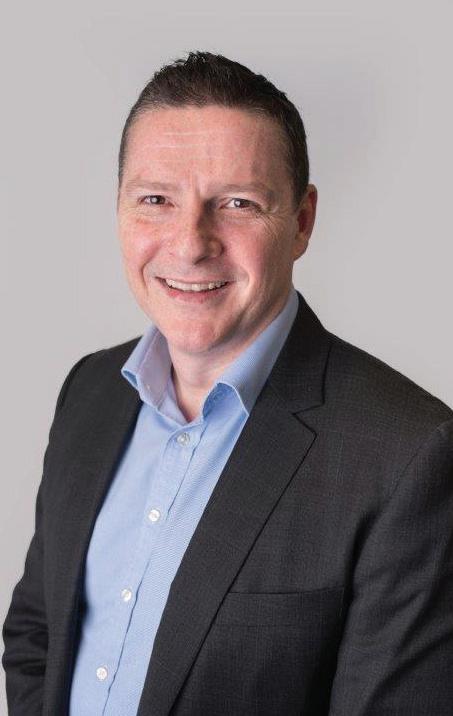
In Australia, the rapid development of artificial intelligence (AI) has coincided with the Government’s announcement of the $15 billion National Reconstruction Fund (NRF), $1 billion of which will be dedicated to reinvigorating, accelerating, and building up advanced manufacturing capabilities.

As businesses have already started adopting AI for various use cases, the Government has also recently launched a public consultation to seek advice on how to mitigate any potential risks and ensure it is applied responsibly.
One of these uses cases is advanced manufacturing, which is a broad term that encompasses technologies applied to any manufacturing facility, including application software and AI tools to augment and generate higher value manufacturing output.
Advanced manufacturing is also likely to use AI to embed faster and safer means of production and better operations management for industrial processes.
Generating speed, safety and enhanced production
Part of removing human error to make manufacturing safer and faster means reducing reliance on human observation. As machinery drivers and operators are among the top three occupation groups with the highest rate of work-related injuries in Australia at 6.5 percent in the 2021-2022 financial year, this makes a use case for AI analytics in augmenting workplace health and safety.
High precision tracking, for example, detects faults in machinery micro-components at a scale previously unachievable - this improves productivity, output, and profitability for manufacturing companies.
AI analytics can match workers’ physical position in relation to how they interact with machines, particularly heavy industrial machinery, facilitating a more comprehensive understanding of safety in workplace operations and injury.
AI software can also manage workflows more effectively by identifying and allocating tasks. This can be taken one step further, with large site and heavy industrial manufacturing operations using
digital twins to optimise these workflows – by using a virtual model designed to accurately reflect the manufacturing process to model operations and planning at significant scale.
These digital twins can show how people and equipment can be moved and managed more quickly and safely around a site in a controlled manner before applying it to the actual operations.
These use cases for AI are less about employing “robots to take manufacturing jobs”, and more about creating a productive workforce and giving advanced manufacturers a competitive edge. The challenge for individuals and corporations is to understand and embrace how this technology can enhance current advanced manufacturing processes, rather than downplaying the potential.
Upskilling workers and investing as a business in emerging tech
Businesses that will benefit most from AI tools are those that couple the technology with well-trained professionals with the skills to augment and uplift automation processes. There is a great opportunity for workers within this sector to upskill and familiarise themselves with these technologies to enhance their careers.
Now is the time for those employed in the manufacturing sector to consider opportunities for retraining and upskilling, in particular within organisations that have a vested interest in facilitating such training to enhance future career pathways.
While a majority of Australians (59%) are worried that automation is putting their jobs at risk when responding to a survey facilitated by PwC, the report also shows that of the 39,000 workers surveyed, 60 percent agree the technology presents more opportunities than risks.
Most heartening is that three quarters of respondents to the survey are ready to learn new skills or completely re-train in order to remain employable in the future.
With capital decisions carrying longer term implications, it’s important for manufacturing businesses to consider their investment in any technologies and operational uplift, whether that be AI or other emerging technologies, including the current and future needs of upskilling their workforce and plan at least 5 or ten-years’ ahead to avoid sunken costs and stranded assets.
IT will also require upskilling of the workforce and considerations regarding ethics, privacy, and cybersecurity. Therefore, a comprehensive approach that combines AI implementation with human expertise is crucial for successful transformation in the manufacturing sector.
We are yet to see what the future looks like where advanced manufacturing is largely driven by AI, but from what we have seen so far, we know it will make production more agile, efficient, and safe for a workforce that will become more highly skilled as they grow familiar with and train in it
9 www.nzmanufacturer.co.nz / NZ Manufacturer August 2023
What is Industry 4.0?

Industry 4.0 refers to the fourth industrial revolution taking place right now. This revolution is driven by the convergence of digital technologies such as the Internet of Things (IoT), robotics, artificial intelligence (AI), augmented and virtual reality, 3D printing and more. Adopting these technologies is enabling manufacturers to enhance their performance, output, monitoring, quality and control on a global scale.
The Industry 4.0 Demonstration Network
The challenge for New Zealand businesses starting out on their Industry 4.0 journey is knowing when, how and what technologies to adopt to improve efficiency, quality, documentation, business intelligence and sustainability.
Where do I start?
This Government initiative enables Kiwi manufacturers to experience Industry 4.0 technologies first-hand via nationwide showcase events, manufacturing site visits, interacting with and learning from industry leaders.
THE FUTURE OF MANUFACTURING IS HERE
THE SMART FACTORY SHOWCASE
The Smart Factory Showcase is a free, interactive session designed to demystify and break down Industry 4.0 with a world leading NZ example. The session will highlight how incorporating smart technologies improves efficiencies, productivity, connectivity, solves common manufacturing issues and streamlines systems and processes. The Showcase provides an ideal introduction to kick-start or progress your own Industry 4.0 journey.
Who should attend
This event is designed for CEO’s, Digital Technology Managers, Operations Managers, Design Engineers and Managers seeking an in-depth understanding of the latest available technologies for businesses. It is a valuable forum to get buy-in from stakeholders and the events are relevant across all sectors. Teams are encouraged to attend together.
What to expect
The Smart Factory Showcase highlights Nautech Electronics’ Auckland facility and what the future of advanced manufacturing looks like – You will be inspired, gain powerful insights to enhance your manufacturing agility and be armed with the knowledge to join the Industry 4.0 revolution.

View all Showcases
It can really help by providing concrete examples of how you can actually apply this stuff and get value from it, and network with others to find out what they’re doing to implement Industry 4.0
Mitchell Sanson, Engineering Manager, Hansa Products
Featuring
NZ Manufacturer August 2023 / www.nzmanufacturer.co.nz 10
“ “
Showcasing the marvels of modern manufacturing
By Catherine Lye
Head of Advanced Manufacturing and Export

Manufacturing
The future of work was on display last week at the Canvas Careers Expo in Tauranga. Secondary school students saw innovation in action including high-end titanium road bikes produced through 3D Printing machinery, and the intricate and complex designs that are not possible with traditional manufacturing methods.
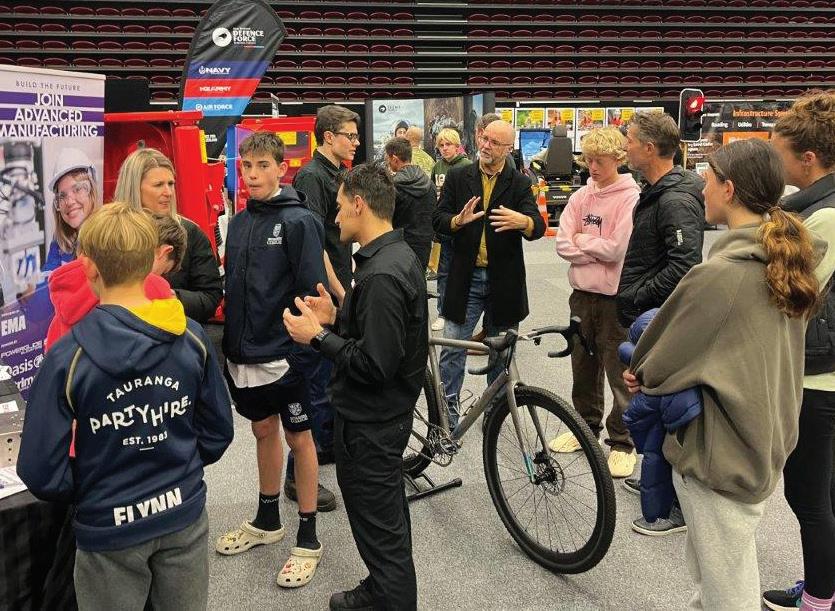
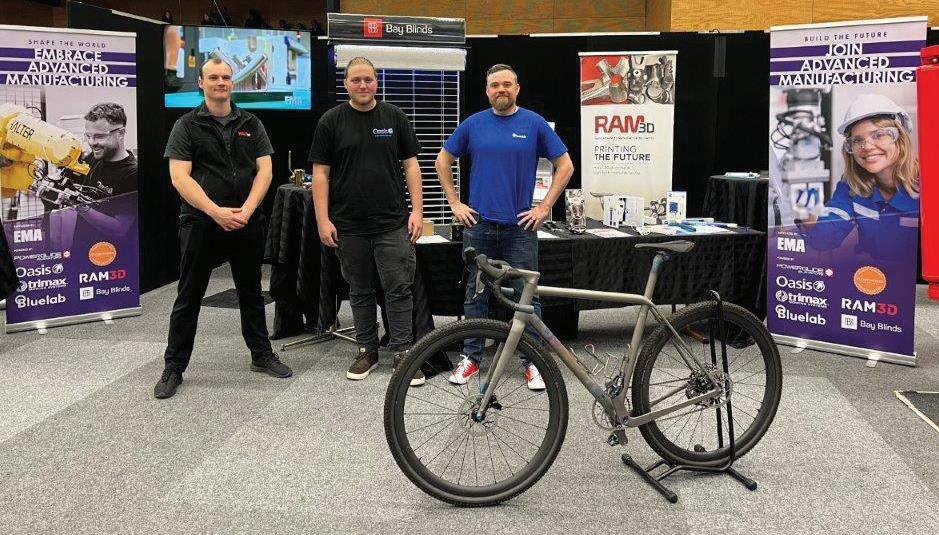
The EMA and seven Tauranga manufacturers collaborated in a joint effort to build awareness, shift perceptions, and raise the profile of the manufacturing sector with students, educators, parents, potential and current workers. Manufacturing offers interesting and diverse
, EMA
opportunities to all people.
Advanced Manufacturing has been prioritised for industry transformation due to its scale and potential to significantly increase productivity, higher wage jobs and a globally competitive low emissions sector. “Advanced” manufacturing refers to the use of modern technologies and processes, rather than whether the final products are high tech or not.


The vision of the Advanced Manufacturing Industry Transformation Plan is “a thriving Aotearoa NZ manufacturing sector of world-class creators, innovators, and makers, delivering quality products, sustainable solutions, and intergenerational well-being.”
One of the priorities developing and attracting a diverse high-skilled and high-wage workforce and showcasing the industry at events like the Canvas Careers Expo highlight the possibilities.
The EMA had the support of twenty representatives from manufacturing companies Trimax Mowing Systems, Bluelab, Powerglide Elevators, Florentines Patisserie, Bay Blinds, RAM3D and Oasis Engineering. The expertise and capability on display was incredible, ranging from a 17-year-old apprentice CNC Machinist to Product
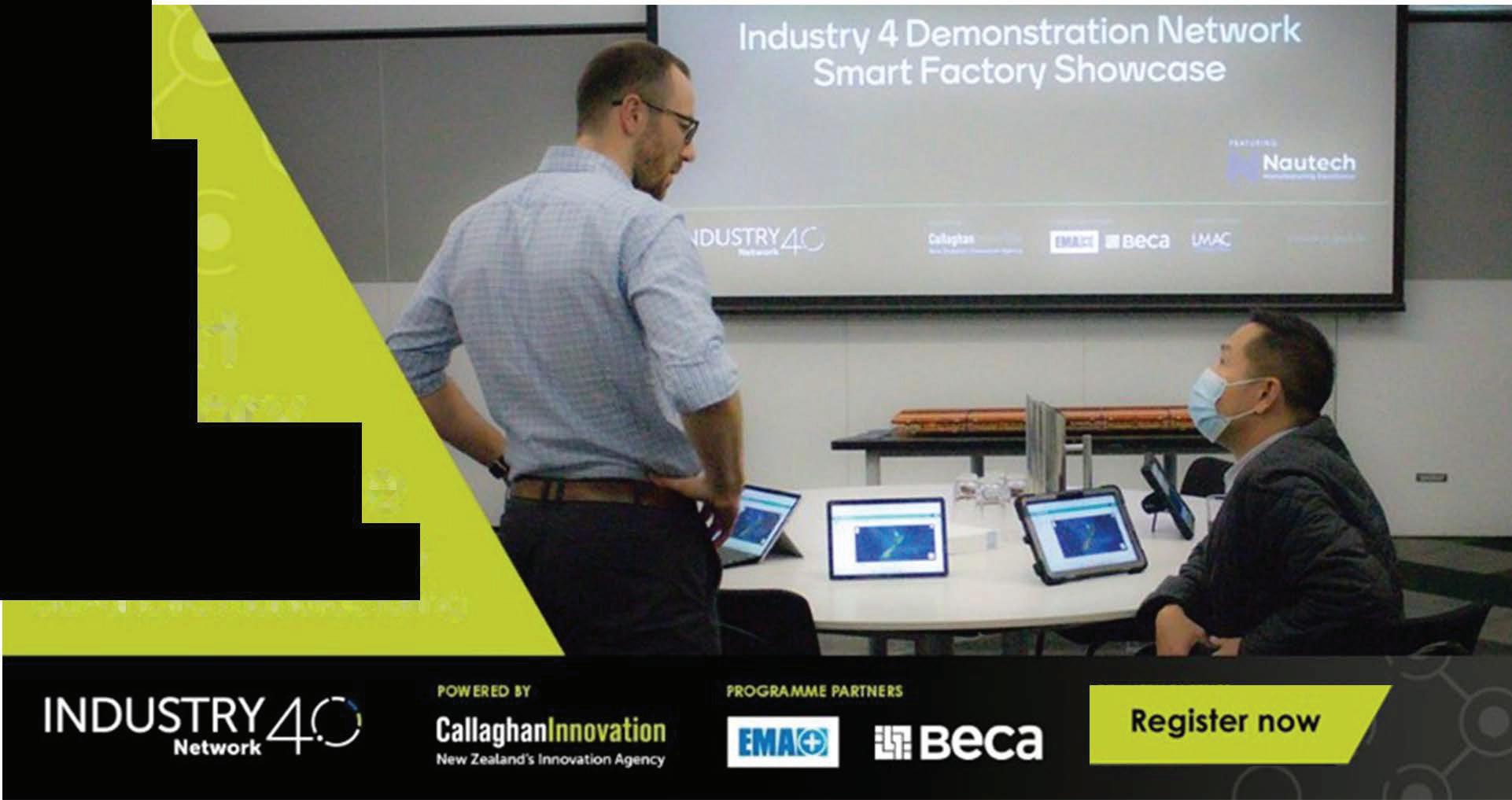
Design Engineers, Product Managers, Workshop Managers, Global Marketing Manager and Managing Directors.
When asked what they love about a career in manufacturing, it was the variety - that there is always a problem to be fixed; implementing new leading edge technologies in new ways; enabling decisions to be made quickly and finding the smartest/best way to do stuff; and to see substantial change quickly; enabling the space to be creative, alongside passionate and super-committed people who through collaboration and teamwork see an idea materialize into a final product that is sent halfway around the world!
New Zealand has some incredible engineering, design and manufacturing capability who are sought out by NZ’s leading innovators taking their products to the world.
Typical Kiwi’s, very understated, but right up there with the best.
Experience
11 Smart
Factory Showcase
the future of advanced manufacturing
Left - Right Barnaby Hamer– Workshop Co-ordinator, RAM3D Tanner Landon –17 yo - Apprentice CNC Machinist, Oasis Engineering Gareth Howe – Production Manager, Bluelab
Communities
Catherine Lye.
in New Zealand is full of clever, practical people solving complex, challenging problems with ingenuity and relentless hard work, making something from nothing and then making it better. There is some really smart stuff being made and we have got to get better about telling the stories that will inspire the next generation and greater diversity into this incredible, innovative sector of the NZ economy.
Fabrum and Chart Industries to manufacture Micro-Scale Liquefiers for hydrogen
New Zealand company Fabrum, a world leader in zero-emission transition technologies to enable a lower-carbon economy, and Chart Industries, a leading global engineering design and manufacturer of highly engineered equipment servicing multiple applications in the clean energy and industrial gas markets, have formed a strategic partnership to collaborate on the manufacture and sale of Micro-Scale Liquefiers for hydrogen and other gases.
The collaboration targets the rapidly increasing demand for liquefaction systems as industries work to decarbonise and transition to new energy sources. The Micro-Scale Liquefier enables small-scale liquid hydrogen production under 5 tonnes per day, offering a new future for sustainable transport, industry, and energy self-sufficiency.
The Micro-Scale Liquefiers can also be used in liquid natural gas (LNG) and other cryogenic markets.
According to the MOU, Fabrum, a leader in industrialised small to medium-scale liquefaction systems and composite vessels for liquid hydrogen, liquefied natural gas, and other gases, will incorporate Chart products into manufacturing their Micro-Scale Liquefiers.
Chart, a leading provider of technology, equipment and services related to LNG, hydrogen, biogas and CO2 Capture, amongst other applications, will add the Micro-Scale Liquefiers to its already expansive technology and equipment portfolio to market and sell through its global network.
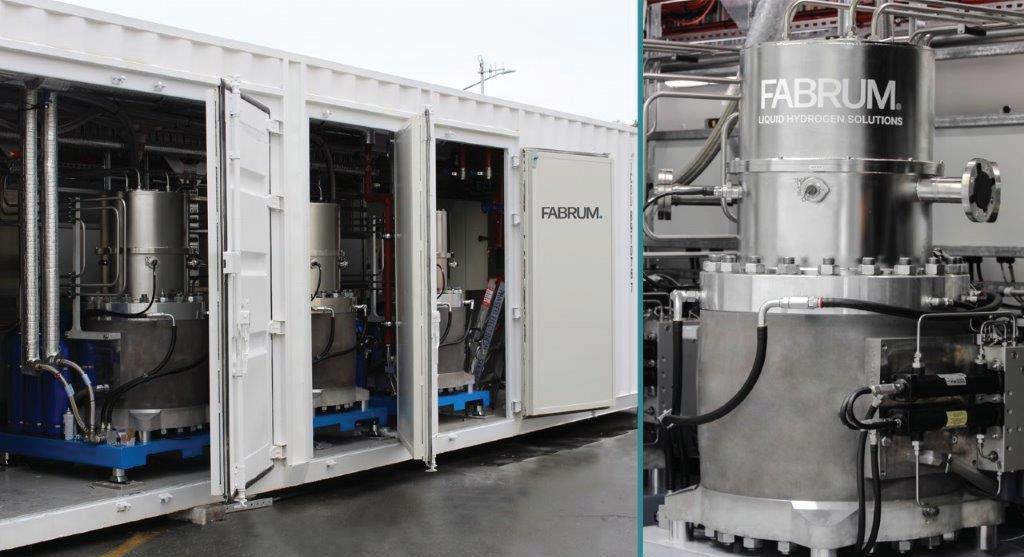
Christopher Boyle, Fabrum’s Executive Chair, says, “Partnering with Chart, a world-leading technology innovator and supplier in clean energy and natural gas markets, represents an important milestone for Fabrum as we work to accelerate the uptake of our zero-emission transition technologies to enable a lower-carbon economy.
“We’ve already proven our hydrogen fuel solutions for small and medium-scale liquid hydrogen production, a paradigm shift from liquid hydrogen produced at large-scale plants and transported to the site of use.
“Chart is the ideal strategic partner to leverage Fabrum’s world-leading technology as it has a large and growing customer base and an established reputation as a technology innovator.”
About Fabrum
Fabrum, headquartered in Christchurch, is a world leader in industrialised small to medium-scale liquefaction systems and composite cryogenic vessels.
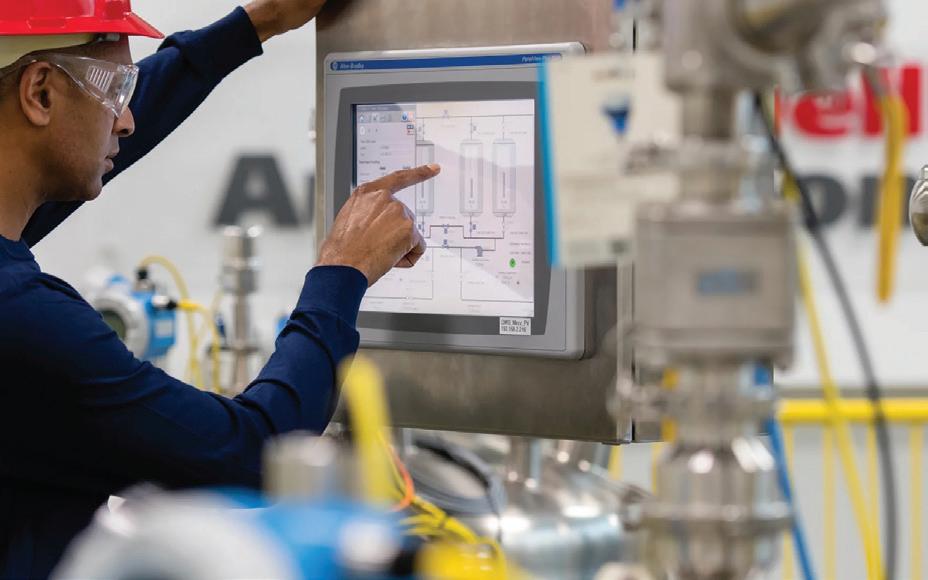
Fabrum has earned a reputation as an innovator in zero-emission transition technologies to enable a lower-carbon economy and is actively deploying end-to-end liquid hydrogen solutions globally across heavy transport, mining and aviation markets.
The company’s core competencies include green hydrogen production, storage, dispensing, and system integration.
Fabrum also has a strong presence in the traditional cryogenic markets of liquid nitrogen (LIN), liquid oxygen (LOX), liquid natural gas (LNG) and liquid air (LAIR), with a global customer base spanning animal husbandry, hi-tech research institutions, manufacturing and defence forces.
Fabrum is the result of the merger between Fabrum Solutions and AFCryo, the Company’s supplier of
cryogenic systems since 2020. Fabrum’s world-leading cryocooler and liquefier systems are marketed under the AFCryocooler brand.
For more information, see www.fabrum.nz
About Chart Industries
Chart Industries is a leading global manufacturer of highly engineered equipment servicing multiple applications in the clean energy and industrial gas markets.
The company’s unique product portfolio is used in every phase of the liquid gas supply chain, including upfront engineering, service and repair. Being at the forefront of the clean energy transition, Chart is a leading provider of technology, equipment and services related to liquefied natural gas, hydrogen, biogas and CO2 Capture amongst other applications. Chart has 64 global manufacturing locations and over 50 aftermarket, service and repair locations from the United States to Asia, Australia, India, Europe and South America.
NZ Manufacturer August 2023 / www.nzmanufacturer.co.nz 12
Fabrum’s sub-half-tonne hydrogen liquefier.
Visualisation for Visionaries Design, test, and deploy applications directly from a web browser
The leading supplier of high quality components and products to industrial markets

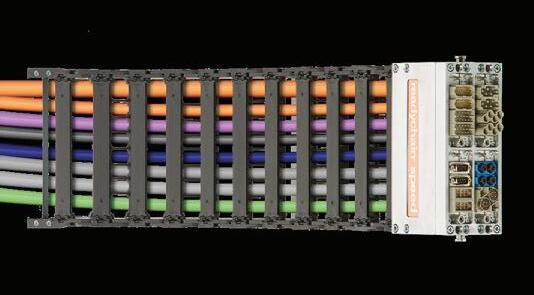




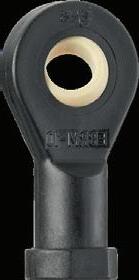




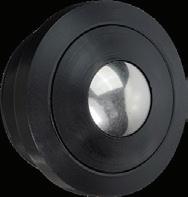
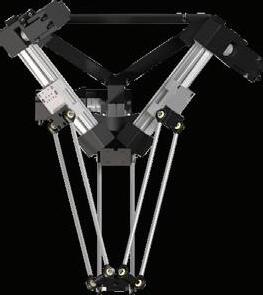


Change your bearing now
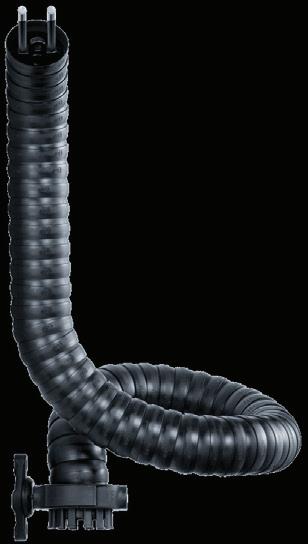

No corrosion, no additional lubrication, light weight. This is what makes our high-performance plastics special. They replace metal in plain, spherical and ball bearings, in slewing ring bearings and in linear technology. Less cost and higher service life for moving applications, proven in the igus test lab; get a competitive edge with our dry-tech® range. All motion plastics can be configured and calculated online. igus.co.nz/dry-tech
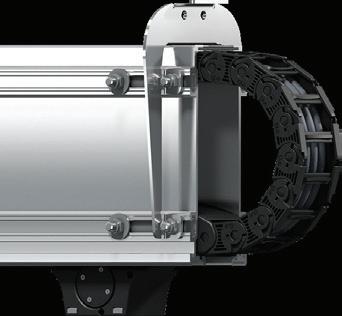
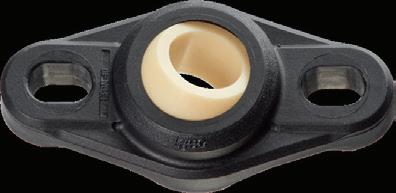


Moving energy made easy
Our comprehensive range matches energy chains and cables to the movement on your machine. For vertical, horizontal or rotary motion, as standard or as special solutions, with smart technology for predictive maintenance. From individual components with no minimum order quantity to harnesed, readyto-intstall systems. All motion plastics® can be configured and calculated online. igus.co.nz/the-chain
13 www.nzmanufacturer.co.nz / NZ Manufacturer August 2023
Auckland & Hamilton | 0800 847 200 | www.treotham.co.nz | info@treotham.co.nz
Aotearoa New Zealand’s first ever Aerospace Strategy will drive continued development of New Zealand’s diverse and innovative aerospace sector by 2030.
The strategy is jointly led by the Ministry of Business, Innovation and Employment (MBIE) and Te Manatū Waka Ministry of Transport (MOT) and will support New Zealand’s aerospace sector to grow its reputation in space and advanced aviation.
“New Zealand is developing unique strengths in aerospace, and it’s important that we maintain and build on these strengths while wisely managing sustainability, safety and national security risks,” says MBIE Manager of Space Policy and Sector Development Andrew Johnson.
“The strategy’s three pillars for the sector will help us build strong economic foundations, provide supportive government-led initiatives and grow participation and engagement in the sector.”
The pillars will support New Zealand to achieve the following goals for 2030:
• Establish a sustainable air-passenger journey,
• Safely integrate autonomous aerial vehicles,
• Be at the forefront of sustainable space activities,
• Actively support space exploration; and
• Enhance decision-making using aerospace-enabled data.
“New Zealand’s aerospace sector is already helping us address challenges such as decarbonisation, conservation, improving agricultural productivity, protecting our seas, monitoring natural hazards and supporting emergency response,” says Andrew Johnson.
Advancing the aerospace sector in Aotearoa Maori in Engineering podcasts
“Our natural advantages and existing strengths in aerospace can help secure our position as a leading place to safely test, trial and adopt aerospace technologies.
“The Government has allocated funding of up to $12 million, further to the $15.7 million in funding announced last year, to support the implementation of the Aerospace Strategy, including for advanced regulatory capability, educational initiatives, research and development partnerships and greater M ori participation.”
The strategy sits alongside the National Space Policy, which was launched in May and presents a clear and connected picture of New Zealand’s interests in space to the world.
Alyce Lysaght, a graduate water engineer at WSP, produces and hosts Maori in Engineering podcasts, that are proving to be very popular.
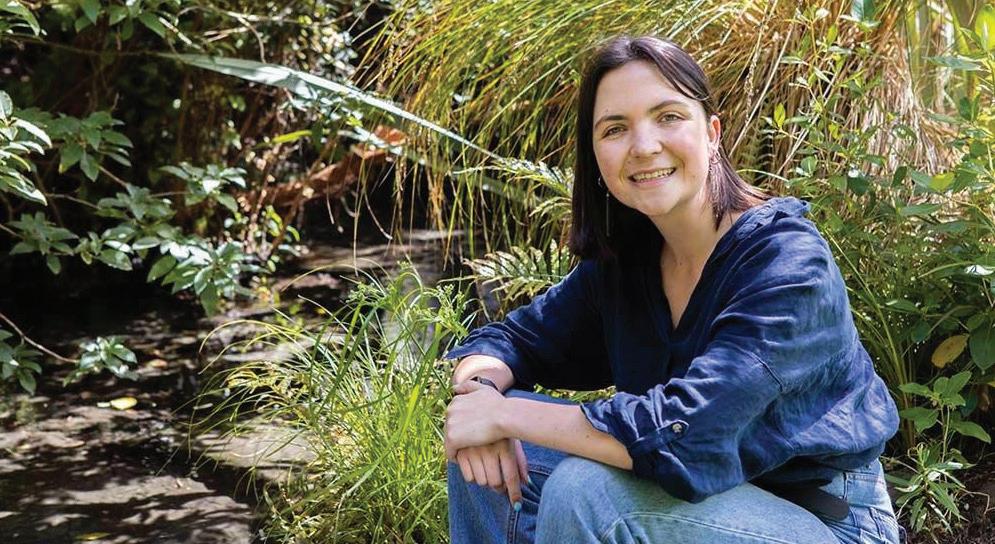
This is an ideal way to influence and reach community and provide a popular picture of the engineering profession through storytelling.
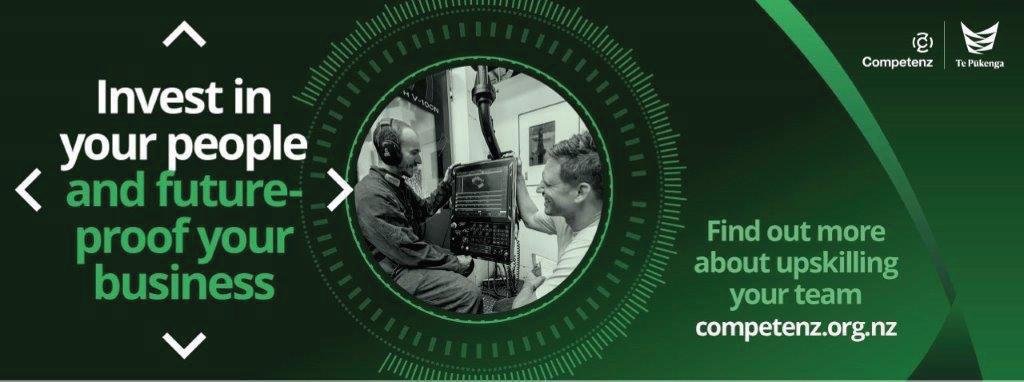
The podcasts can all be viewed on the one site https://www.maori-in-engineering.com/podcast
continued from Page 6
A data-driven approach to reducing operating costs
Improve forecast accuracy to inform business planning
Data analytics can significantly enhance forecasting accuracy through combining historical patterns and trends with external data sources such as weather forecasts, market forecasts and major event calendars, to create predictive analytics algorithms that can forecast future trends with greater precision. These predictive algorithms can be further refined through scenario modelling and machine learning to enhance their predictive power. Greater forecast
accuracy enables businesses to reduce costs through, for example, optimised inventory holdings based on projected customer demand, optimised product margin based on forecast market pricing and optimised workforce planning to match forecast production.
How organisations respond to challenging environments sets the foundation from which they are able to recover, accelerate or thrive as the headwinds reduce.
Organisations that take a knee-jerk approach to cost
cutting as the economic indicators turn downwards often find themselves behind their competitors as the market picks up and they are not able to respond to increased or changing demand.
Using data that is already being collected, organisations are able to take a data-driven approach to cost reduction based on informed decision making that balances the need to increase efficiency, reduce waste and reduce costs whilst not jeopardising future agility and performance.
NZ Manufacturer August 2023 / www.nzmanufacturer.co.nz 14
Expand your already reliable networks with ease
Expanding a network or increasing its complexity to meet growing connectivity demands is not always necessary. Although it is relatively easy to just add one more networking node to a network, the combined effort of configuring, maintaining, and troubleshooting a network may probably surpass the initial cost of a future-proof device.
Along three applications, we take a closer look at the challenges business owners face when expanding their edge networks. Furthermore, we will recommend strategies that may help you reduce the hassles of configuration and maintenance.
Before we get to our recommendations, let us first learn a bit more about each of the three applications.
Application 1: Adopting Automated Sortation for Production Efficiency
A food processing manufacturer invested in new production assets, including an automated sortation system that improved food sorting efficiency. Field staff were pleased to work with the automated sorting process, but they were concerned about unfamiliar network signals and maintenance.
To address these concerns, the system upgrade required:
• No requirement of IT skills for rapid deployment, and a trouble-free operation and easy maintenance
• Delivering I/O tagged data with high priority for real-time applications
• Small network switches with high port density that fit in control cabinets that hold over 10 devices in a limited space
Application 2: Field Asset
Monitoring Along a Pipeline Deployment

An oil and gas company expanded networks to keep up with their crude oil wells exploration. The field network was built to control and monitor field instruments between oil wells, EMS workstations, and the remote OCC control center. The control cabinets were built separately from network cabinets for field operations and required simple but highly reliable connections capable of sending alarm notifications. The expanded network had the following requirements:
• Rugged network devices to operate in hazardous locations
• An instant warning function for on-site monitoring
• Enhanced noise resistance to transfer EMS and I/O data to a local network console
Application 3: Reliable Data and Image Collection From ETC Gantries
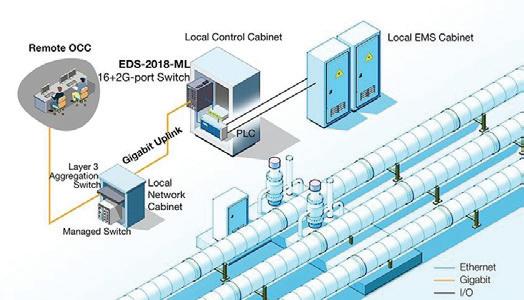
New toll gantries for electronic toll collection were deployed in an open-road toll system. The toll gantry required an Ethernet switch that could collect data from vehicle-detection and fare-deduction equipment, and then uplink to a roadside cabinet as a backhaul to the remote operations centre. The system requirements included:
•Durable industrial-grade devices that work reliably in an open-road environment
•Connections of over 100 meters to uplink video streams and sensor data to roadside cabinets
• Easy installation and long-lasting
reliability to reduce the time spent on the maintenance of the gantries
From these three applications, it is evident that it is very likely to expand connecting nodes in field sites when a business grows or new initiatives are introduced to its industrial operations.
Control engineers may be familiar with industrial operations; however, unfamiliar network signals or troubleshooting can become a headache for them. Therefore, it is essential that edge networking devices – mostly industrial unmanaged Ethernet switches – are easy to deploy, adaptable, and reliable.
The Perfect Match
Industrial unmanaged Ethernet switches have emerged as easy-to-deploy networking devices to connect sensors, I/Os, and PLCs, as well as aggregate data to network backbones. On one hand, they feature plug-and-play, making them very popular among OT engineers. On the other hand, however, they sometimes take more time for troubleshooting because of their lack of visibility. The solution is an instant relay alarm to inform OT engineers of the network status without back-and-forth troubleshooting.
Furthermore, the Quality of Service (QoS) function, well-known by IT engineers, is also recommended to OT engineers to further prioritize the traffic in field sites.
Usually, OT engineers will rely on SCADA systems to configure and check whether their control data is well delivered to their destinations. Nowadays, you can just switch on the QoS function on an industrial unmanaged Ethernet switch. It is also recommended to select industrial unmanaged Ethernet switches that feature a compact-size, flexible port combination, wide operating temperatures, and industry certifications.
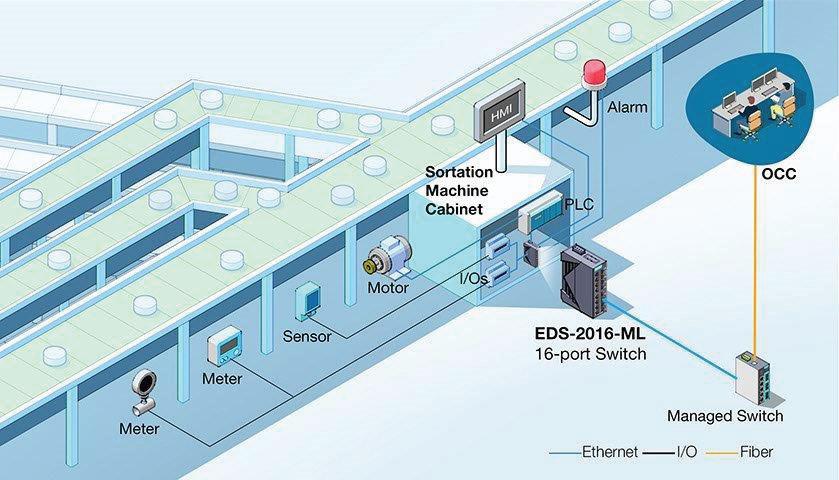
Ideal for Edge Network Expansion
Moxa has introduced the EDS-2010-ML/ 2016-ML/2018-ML Series, a lineup of industrial unmanaged switches with an extra-small footprint. These switches are ideal for edge network expansion in a variety of industrial applications that need proven reliability, easy deployment, and flexibility. Download the application notes to learn more about how the EDS-2000-ML Series unmanaged switches help you get ahead with rapid and reliable network deployment in the industries of factory automation, oil and gas, intelligent transportation, and marine. Moxa Inc. www.moxa.com
Acelink www.acelink.co.nz is the representative for Moxa in New Zealand.
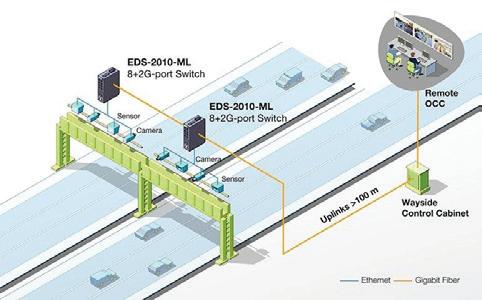
15 www.nzmanufacturer.co.nz / NZ Manufacturer August 2023
Kitchen Inspirations wins big at the Pukekohe Business Excellence Awards
Leading cabinetry and interior design company, Kitchen Inspirations is the winner of the Excellence in Manufacturing Award and highly commended in the Excellence in Customer Service category at the Pukekohe Business Association’s Business Excellence Awards 2023.
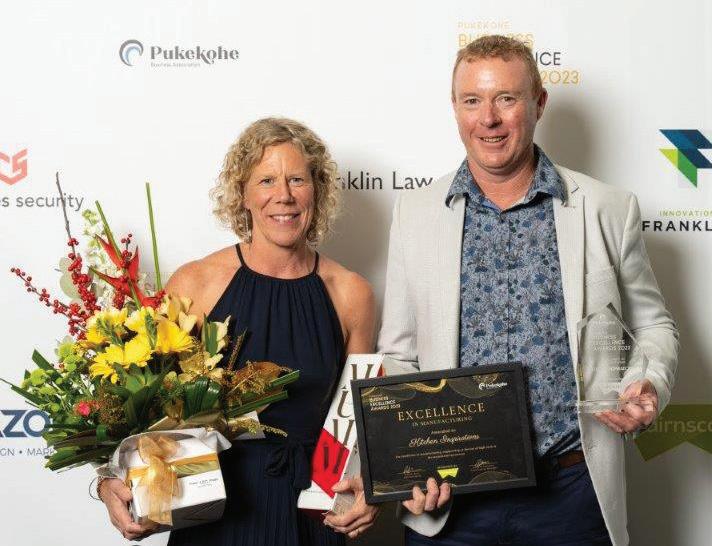
On Saturday 22 July, the company was recognised for the continuous improvement of its business operations to reduce waste, increase production profitability, and have a leading edge with quality and safety innovation.
Kitchen Inspirations have grown into a brand that is known for high-quality kitchen and cabinetry designs, manufacturing, and installation through exceptional workmanship, adopting the latest production and
design methods, machine automation and quality materials.
Industry expert and judge, Eddie Bignell from New Zealand Steel says Kitchen Inspirations is “living and breathing for continuous improvement, lean manufacturing, and striving for excellence”. Investing in advanced technologies, such as CNC and edge banding machinery ensures more efficient, sustainable, and automated operation. The CNC machine nests kitchen parts economically per sheet, maximising how many pieces they can get. Their conveyor returns edged panels back to the machinist for greater efficiency.
Kitchen Inspirations experiments with new materials and production methods to create unique designs which foster an environment for their designers to be creative and original. Products are mostly sourced from sustainable suppliers such as Laminex NZ and Prime Panels which use low-emission materials and commit to responsible forest management.
Design software from Cabinet Vision and Vortek is used to provide concise, visually appealing designs for customers, which can then be used in the manufacturing process. Pukekohe Business Association Manager, Shawna Coleman says “Kitchen Inspiration’s passion for exceptional quality and craftsmanship and their drive to be at the forefront of technology within the industry sets this family business apart.”
This is the second time the company has taken out the manufacturing category at the Pukekohe Business Excellence Awards. Local competitor, Carlielle Kitchens received highly commended in the Excellence in Manufacturing category.
Richmond Rolling Solutions strikes distribution deal with ForwardX robotics
ForwardX’s solutions help to reduce operational costs, while improving the overall efficiency in warehouses, retail facilities, distribution centres and manufacturing plants, and represent the most intelligent AMRs available today.
With the explosion of Ai, ForwardX is constantly expanding its catalogue of products and now employs over 250 top computer vision and robotics experts.

As a result of Richmond’s new distribution deal, Australian and New Zealand businesses will have access to Forward X goods Autonomous Mobile Robot (AMR) solutions and global leadership products, which will be backed by local support, knowledge, and engineering from Richmond Rolling Solutions.
There will also be Australia’s first fully functioning demonstration centre in Melbourne to ensure
key decision makers understand AMR capabilities. Customers will be able to trial and test the full suite of products, giving them a risk-free experience, they won’t find anywhere else.
With highly configurable options for all businesses , ForwardX’s Pick2Go robots are already revolutionizing warehouse fulfilment centres across Asia, Europe, and North America.
As well as increasing Unit Per Hour picking rates by up to 300%, early adopters and clients can expect a (Roi) Return On Investment between 6 to 12 months. ForwardX Robotics is a global technology leader in the fields of AI and Robotics. Through its flexible automation platform comprising of intelligent mobile robots and AI-enabled software, they serve over 100 of the world’s most successful companies including DHL, IKEA, TCL, and UNIQLO

NZ Manufacturer August 2023 / www.nzmanufacturer.co.nz 16 / www.nzmanufacturer.co.nz
Richmond Rolling Solutions is partnering with ForwardX, a global leading person-to-goods Autonomous Mobile Robot (AMR) solutions provider, to distribute its next generation products across Australia and New Zealand.
Forward Thinking
Using machine learning to find the true value of companies

University of Auckland researchers are harnessing artificial intelligence to evaluate the actual value of companies based on profitability, efficiency, growth, risk and more.

In a paper published in the Journal of Accounting Research, Business School academics Helen Lu and Paul Geertsema show that machine learning algorithms can provide more accurate valuations of stocks than traditional methods.
Their machine learning method outperforms traditional models in valuation accuracy and the stocks it identifies as undervalued tend to rise in price, giving investors the opportunity to profit without taking on additional risks.
Not only that, but Lu and Geertsema also developed machine learning algorithms to help professionals identify peer firms when traditional methods fall short.
This is especially useful in countries like New Zealand, where finding obvious peers can be a struggle, says Lu, who has spent many years specialising in research that applies artificial intelligence to solve finance problems.
Determining the value of a company involves many subjective choices and, therefore, its stock prices can be influenced by human bias, says Lu, which is why this kind of machine learning methodology is game-changing.
According to Doctor Lu, industry professionals often value companies by comparing them against others
in the same industry, but this process of determining which businesses are industry peers can be influenced by biases and evidence suggests that practitioners strategically select peers to achieve desired valuation results.
“Say if it’s a software company being valued, industry professionals typically look for peer firms in the technology industry and ideally find a few that also offer similar products, but the process is quite subjective. Because what exactly is the ‘tech industry’, and how do you clearly determine whether some companies are comparable or not. Perhaps we should also consider pricing power and growth potential? Skilled professionals often follow a ‘hunch’ which can be influenced by personal biases.”
To try to minimise such issues, the researchers trained and utilised what’s known as tree-based machine learning models. These models automatically figure out the best ways to allocate firms to different ‘leaves’ in a tree using firm fundamentals.
As a result, businesses that are often assigned to the same leaf can be seen as close peers with similar fundamentals. Conversely, firms that are rarely allocated to the same leaf have different fundamentals.
The researchers’ models analysed a massive sample of US common equities listed on the NYSE, NASDAQ,
and AMEX between January 1980 and December 2019. The final sample used by the machine learning models consists of 1,811,785 firm-month observations, which correspond to 16,201 firms. These models can be extended to stock markets around the world.
Lu says their approach not only generated more accurate valuations than traditional models over time and across firms, but the valuations also more closely resembled the true value of a company.
17 www.nzmanufacturer.co.nz / NZ Manufacturer August 2023
Machine learning algorithms can provide more accurate valuations of stocks than traditional methods.
Looking for a marketing edge?
of licence holders say signing on has positively affected sales.
70%
Sustainability
Laminex’s sustainability strategy focuses on ‘what matters’
Manufacturer Laminex knows that a successful sustainability strategy starts with understanding what matters. The company has completed a ‘materiality assessment’ to identify and prioritise the environmental, social and governance topics it needs to focus on. ‘Material’ in this context means ‘important’.
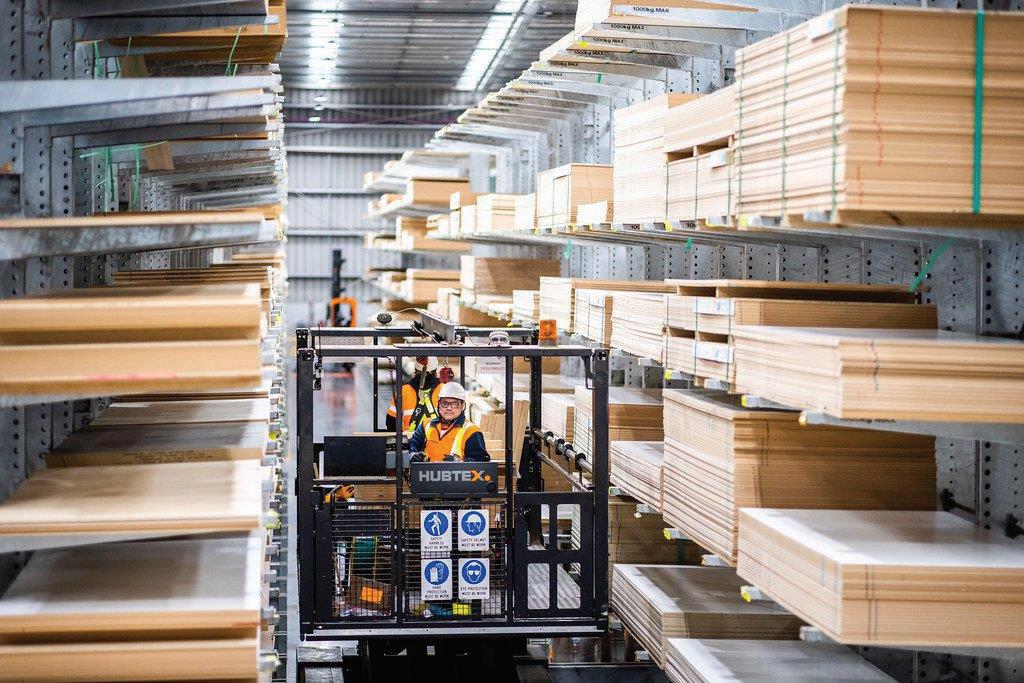
Laminex New Zealand supplies high-quality countertops, vertical panels and timber-based building products. They manufacture decorated board and particleboard in Hamilton and Taup Laminex is part of Fletcher Building Group. The company is focused on its business’ long-term sustainability and helping to create environments that New Zealanders will enjoy for generations.

What is materiality assessment?
Materiality assessment is a structured way for a business to identify and understand what is important to its stakeholders. It uses qualitative research to identify important topics.
Laminex Sustainability Manager Jamie Rodriguez explains that a materiality assessment allows the manufacturer to deliver on its brand promise to go ‘Beyond the Surface’.
‘Customers are increasingly interested in our sustainability strategy,’ says Jamie. ‘They want to buy from a business that values people and the planet. Materiality assessment helped us to investigate deeply what Laminex’s stakeholders value most highly and what they want the business to deliver on.’
How Laminex carried out its
materiality assessment
Step one: they identified their important stakeholders
Many people and organisations are involved with Laminex. They have an interest in how the business performs – operationally, socially, economically and environmentally.
Jamie began by dividing Laminex’s stakeholders into two groups – internal and external. Internal stakeholders included Laminex General Manager Mike Arthur and representatives across all departments such as Operational Managers, Health and Safety and Fletcher Building’s Matauranga Maori (Maori knowledge) Senior Advisor.
Customers like Kitchen Studios and architects who specify Laminex products featured on the list of external stakeholders.
To help the team understand external influences on the industry, this group also included government agencies such as MBIE and organisations like the New Zealand Green Building Council.
Step two: they sought stakeholders’ feedback
To gain stakeholders’ views, Jamie and our thinkstep-anz
team interviewed 16 stakeholders and ran a focus group. This work yielded 19 material topics. They included people topics (like health, safety and wellbeing), environmental topics (like minimising waste and reducing carbon emissions) and business topics (like customer service and innovation).
The company then surveyed a wider group of stakeholders online. They asked them to rank the 19 topics by using this question: From your perspective, how important should this topic be to Laminex?
Step three: they added the business lens With this information in hand, Laminex’s leadership team considered the topics from a commercial point of view. They asked themselves: What do these topics mean for our reputation? Our profitability? The value we bring to society and the environment? Our business priorities?
Step four: they brought it all together
Laminex identified the topics that ranked highest for stakeholders’ importance (step two) and business impact (step three). All 19 topics raised in the materiality assessment are important. The highest-ranking topics form the foundations of Laminex’s strategy.
How materiality assessment is helping Laminex run its business
A clear, relevant strategy
The assessment has helped create a balanced strategy for Laminex’s sustainability – people, planet, business.
‘The outcomes of the materiality assessment have validated the great sustainability initiatives we are already doing,’ Jamie says. ‘They also guide us in the direction of other areas that the business should be focusing on now and into the future, with clear priorities and targets.’
Laminex employees are getting behind the strategy.
‘We gave everyone in the business the opportunity to have their say. At the end of the day, our people
are the ones delivering on the strategy, so it was important that they were involved and felt heard throughout the process.’ Laminex customers support the strategy too. They see it as an opportunity to discover ways to work better together.
Parent company Fletcher Building is also supportive. Creating a sustainability strategy for Laminex builds links between the companies and helps them both deliver on common goals and targets.
Stronger relationships
Communicating the results of the assessment and acting on feedback has strengthened relationships with stakeholders and helped to engage them. The data Laminex has gained will help the company tailor activities and products to niche customers or areas of mutual interest.
New business opportunities and processes
The assessment has helped Laminex identify opportunities to innovate. For example, as a New Zealand-operated business, there is an opportunity to build Te Ao M ori (M ori principles) into how the business runs.
‘The materiality assessment gave us insightful information to help us create a strong sustainability strategy. It’s also created a ‘checklist’ of important topics that will guide Laminex’s future decisions’, said Jamie. So much information just from asking a few questions!
www.thinkstep-anz.com
NZ Manufacturer August 2023 / www.nzmanufacturer.co.nz 18
Jamie Rodriguez, Laminex Sustainability Manager.
Laminex team in the Auckland Distribution Centre.
Photo credits: Laminex
What is the future of work?
Just like the world at large, the world of work shifts and changes over time. The future of work refers to an informed perspective on what businesses and other organisations need to know about how work could shift (given digitisation and other trends), plus how workforces and workplaces can prepare for those changes, big and small.
When you think of the future of work, what do you picture? Offices that look more or less like today’s? Factories full of robots? Or something else entirely?
While no one can predict the future with absolute certainty, the world of work is changing, just as the world itself is. Looking ahead at how work will shift, along with trends affecting the workforce and workplaces, can help you prepare for what is next:
• One in sixteen workers may have to switch occupations by 2030. That is more than 100 million workers across the eight economies studied—and the pandemic accelerated expected workforce transitions.
• Job growth will be more concentrated in high-skill jobs (for example, in healthcare or science, technology, engineering, and math [STEM] fields), while middle- and low-skill jobs (such as food service, production work, or office support roles) will decline.
• A few job categories could see more growth than others. The rise of e-commerce created demand for warehouse workers; investments in the green economy could increase the need for wind turbine technicians; aging populations in many advanced economies will increase demand for nurses, home health aides, and hearing-aid technicians; and teachers and training instructors will also continue to find work over the coming decade.
• But other types of jobs may be at risk: for example, as grocery stores increasingly install self-checkout counters, there may be a need for fewer clerks, and robotics used to process routine paperwork may lessen demand for some office workers.
The future of work was shifting even before COVID-19 upended lives and livelihoods. But the pandemic accelerated three broad trends that will continue to reshape work as the effects of the crisis recede:
1. Remote work and virtual meetings are likely to continue, although less intensely than at the pandemic’s peak.
2. E-commerce soared, growing at two to five times the pre-COVID-19 rate, and other kinds of virtual
transactions such as telemedicine, online banking, and streaming entertainment took off. And shifts to digital transactions also propelled growth in delivery, transportation, and warehouse jobs.
3. The pandemic propelled faster adoption of digital technologies, including automation and AI. Companies used them to control costs or mitigate uncertainty; they also deployed these technologies in warehouses, grocery stores, call centres, and manufacturing sites to either reduce workplace density or deal with surging demand for items.
Understanding these macro trends within the global economy is vital to planning for what is ahead.
The future of remote working? And hybrid?
COVID-19’s spread flattened the cultural and technological barriers standing in the way of remote work. The pandemic sparked a structural shift in where work takes place, at least for some people. But will it last?
Recent analysis of the potential for remote work to persist looked at 2,000 tasks used in roughly 800 jobs in eight focus countries. It showed that 20 to 25 percent of workforces in advanced economies could work from home in the range of three to five days a week—which is four to five times more remote work than pre-COVID-19.
It is worth noting that more than half the workforce has little or no opportunity for remote work. For example, jobs that require on-site work or specialised machinery, such as conducting CT scans, need to be done in person. Of these jobs, many are low wage and are at risk from broader trends toward automation and digitisation. Moreover, not all work can be done remotely. For example, negotiations, brainstorming, and providing sensitive feedback are activities that may be less effective when done remotely.
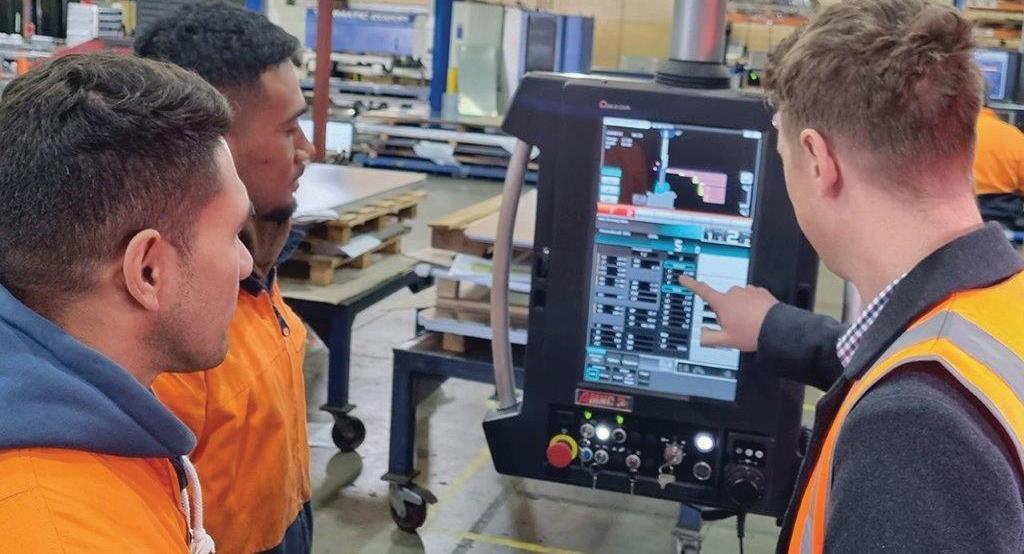
Hybrid work setups, where some work happens on-site and some remotely, are likely to persist. And organisations will need to refine their operating models in response. To unlock sustainable performance and health in a hybrid world, organisations can build strength in:
1 Expand executives’ focus on strategic clarity, coaching, and empathy. The leading driver of performance and productivity isn’t compensation or stretch goals but rather the sense of purpose work provides to employees. Be more intentional
about interactions, especially those that happen in person.
2. Foster outcome-based management of small, cross-functional teams. This is both more human and more effective as performance management practices shift from being about controlling employees’ work to empowering and enabling teams and people to perform.
3. Increase talent velocity, especially with reskilling. Being able to staff teams across organisational siloes is a hallmark of agile models. Moving in this direction for talent management might entail developing internal talent marketplaces or hubs for talent redeployment that make it easier for people to discover potential projects. It will also involve reskilling and upskilling people more quickly than in the past, leaning on formal training, as well as apprenticeship and mentoring.
4. Find new zero-cost, high-optionality ways to collaborate. It can help to define a model to increase how quickly your organization can discover and adopt better modes of collaboration, both physical and digital. Do workers need an informal, confidential channel for banter or guidelines on making hybrid meetings more effective? Be intentional about designing these interactions and communicating expectations and working norms.
5. Increase the rate of technology adoption. It’s imperative for companies to seek out new tech and use data to drive optimal results and make better decisions.
What elements matter in understanding the future of work?
Companies exploring the post-COVID-19 future of work need to tailor their approach to their unique context. Balancing three symbiotic elements can provide a holistic understanding of the forces shaping the future of work:
• The nature of work. Organisations should be able to answer two big questions clearly. First: How do we make money? Second: How does work get done? Linking the answers to these two questions to a dollar value can yield a clear set of organisational priorities and enablers for delivering the strategic vision.
• The workforce of the future. People are an organisation’s most valuable asset, and getting ready for the future will include understanding the workers you have (supply) as well as those you need (demand). Getting clear on both can expose skill pools where you are either long or short on talent—and allow you to take action before the talent gap becomes a competitive liability.
• The workplace of the future. A combination of physical location and organisational norms and ways of working make up the workplace. And while in the past, companies brought people to work, say, in massive factories or industrial centres, technological advances in recent decades may be influencing a shift that takes work to the people, for instance, in more flexible long-term remote or hybrid models.
Addressing social and economic inequality will be crucial to sustainable, inclusive growth. And at work, ensuring that employees from all backgrounds can perform and thrive, often involves dedicated efforts to improving diversity, equity, and inclusion.
19 www.nzmanufacturer.co.nz / NZ Manufacturer August 2023
Analysis
Women in Engineering
Graduating from the ‘60s in engineering
Women have been graduating from New Zealand universities since the 1880s. But it took until the mid-1960s before women were graduating with engineering degrees. Why did it take so long? And why are women still a minority in engineering courses?
In 1876, Helen Connon was the first woman to enroll in a New Zealand university, graduating in 1880 with a B.A. in Latin, Mathematics, English, French and Physical Science.
By 1897 women had graduated in both medicine and law. But it would be another almost 70 years before a woman would graduate from a New Zealand university with an engineering degree.
Leslie Robertson led the way, graduating with a degree in electrical engineering from University of Canterbury in 1965. By 1981, women still only made up 2.4% of engineering graduates from University of Canterbury, compared with Law 33.7%, medicine 31.8%, and architecture 24.3%.
By the end of the decade, the percentage of women graduating in law and medicine had risen to 50%, but engineering trailed behind at only 7%.
University initiatives
There have been numerous initiatives over the decades to encourage women to consider a career in engineering. In 1989, University of Auckland created the position of Liaison Officer for Women in the Physical Sciences and Engineering, and appointed Liz Godfrey to the role. It was a full-time position and the first of its kind in New Zealand.
Studies looking at women’s low participation rates in engineering identified a number of issues. Far fewer girls than boys continued with maths and science subjects to senior high school level; teachers and students had little knowledge of the breadth of career possibilities an engineering degree could offer and did not promote it to their female students; young women did not see engineering as relevant to their lives; and the lack of female role models meant that they could not see themselves represented within the engineering profession.
Liz worked closely with schools, and in collaboration with others, developed programmes to promote engineering and science careers to students. SOS
- Skills and Opportunities in Science for Girls, was a two-day conference-style course for 12- to 15-year-old girls.
Women working in engineering and science roles led activities that showed the broad range of engineering disciplines and demonstrated how these were relevant to the students’ lives.
Enginuity Day was an annual University of Auckland open day for women senior high school students already studying maths, chemistry and physics. It introduced them to the different engineering disciplines and employed current female engineering students as guides and role models.
Liz also supported women students already studying engineering and sciences at the university. Following Auckland’s lead, the University of Canterbury established a similar position.
Finding support in engineering groups
Women in Engineering groups were another way universities and women students sought to network and support each other. But this was not always an easy or comfortable means of support for students. Particularly in earlier decades, many women chose not to be involved with initiatives of this kind.
Already uncomfortably visible, they did not want to further set themselves apart and concentrated on just completing the course to the best of their abilities. In choosing engineering, they knew they were entering a man’s world and wanted to prove they could make it in this environment.
Women in Engineering groups waxed and waned at Canterbury and Auckland universities depending on the interest and involvement of current students.

The most recent iterations, WEN (Women in Engineering Network) at Auckland, and WiE (Women in Engineering) at Canterbury, were formally established in 1993 and 1999. Both groups work to build connection between students and between students and industry.
Taking an inwards look
If the percentage of women engineering graduates was low, women’s membership to IPENZ was even lower. In 1983, IPENZ had 5,500 members. Only 30 were women. A significant culture change was needed.
At the 1988 IPENZ conference, the council adopted three proposals: to promote engineering as a career for women; to promote equal opportunity employment; and to remove sexist language from formal IPENZ documents including the Code of Ethics.
Through the 1980s and 1990s, the IPENZ School Liaison Committee worked to promote engineering as a career for girls. And in the 2010s, IPENZ broadened its focus to supporting women to remain in and advance their engineering career.
Engineering into the future
As of 2018, women made up around 14% of the engineering profession. We still have more work to do, until the profession is representative of the communities it serves. A diverse and equitable engineering profession benefits everyone.

Engineering New Zealand is a founding member of the Diversity Agenda and a Diversity Agenda Accord signatory. The work involved in being part of this collaboration with the Architecture profession ensures that we are held to account, are aware of, and can address any gender imbalances in our workforce.
Engineering New Zealand is currently working on a project to tell the history of women entering the engineering profession in New Zealand and to bring women’s voices to the fore through oral history. If you have any info or photos to contribute, please get in touch with Engineering New Zealand Heritage Advisor Cindy Jemmett
NZ Manufacturer August 2023 / www.nzmanufacturer.co.nz 20
Join us and scores of other Kiwi organisations that have galvanised around one common goal: 20% more women engineers by 2021. www.diversityagenda.org
Only 14% of all our engineers are women. We want to change that.
Whakatane Paper Mill commits to further investment
In early 2021, Whakatane Mill Ltd (WML) was on the brink of closure. However, the company has had a significant investment upgrade, and progress is already well underway.

WML has successfully secured a substantial private investment of over NZD$70m from its shareholders, signalling the company’s robust health and promising future.
This investment marks the most significant capital expenditure for WML since 2004 and is a testament to its commitment to growth. The infusion of funds will facilitate a major upgrade, elevating WML to industry-leading standards.
The upgrade will deliver an additional 50,000 tonnes of premium folding box boards, increasing WML’s production from 150,000 to 200,000 tonnes. Customers will enjoy the advantages of higher quality board, while the production process will be more environmentally friendly, utilising less raw materials and operating with improved energy efficiency.
The upgrade is paving the way for WML to potentially produce up to 300,000 tonnes of premium folding box board in the future.
Enhanced Sustainability and Local Impact: Advancements in Energy, Water and Packaging
Per tonne of board, the energy efficiency will be approximately 30% better, gas consumption will
be reduced by more than 30% and WML’s water consumption from the local river will also see a significant decrease.
Additionally, WML will eliminate plastic consumption by transitioning from plastic to paper wrap for packaging of its finished products. The heat recovery system will contribute significantly to WML’s ESG profile.
As the sole folding box board producer in Australasia, WML’s advancements offer main brand owners such as DB Breweries, McDonalds, and Griffins the chance to reduce their carbon footprint and avoid importing packaging from countries like Finland, Korea, China, and Chile.
This move towards sustainability presents a positive environmental impact.
European sourced state-of-the-art equipment new phase in expansion

Construction commenced in the last week of June and will continue until mid-late August with full production expected to be achieved by November 2023.
The equipment for the upgrade has been sourced from highly specialised manufacturers in Europe. The core equipment for the board machine, specifically the water removal/drying section, has been imported from Germany, while the fully automated paper wrap line originates from Finland, and the crucial heat recovery system has been acquired from Italy. Fifty contracting companies from across the Bay of Plenty are involved in the upgrade with over four hundred contractors on site to install approximately 45 kilometres of cable and 5.5 kilometres of piping.
Ian Halliday, Executive Chairman of Whakatane Mill Limited, expressed his pride in this achievement, not only for the WML’s workforce but also for their commercial partners, customers, and the local community.
21 www.nzmanufacturer.co.nz / NZ Manufacturer August 2023
and future-proof your business Invest in your people Find out more about upskilling your team competenz.org.nz
Developments
Workshop Tools
Laser cutting quoting helps with tricky and unique jobs
Quiet achiever Frank Maat specialises in bespoke and unique metal fabrication jobs, through his business Rolleston Sheetmetal Engineering.
Based in Rolleston,Frank’s company predominantly serves the agricultural community, including its suppliers and contractors, who request anything from large silos to storage boxes, to safety handrails, and everything in between.
Frank soon realised that he was spending too much money, and waiting too long, by getting laser cutting done by a third party, so he invested in his own laser cutting machine.
“I wanted to be in control of timelines and deadlines, so I could deliver more reliably to my customers, so I purchased a brand new laser machine. But then I had a new challenge – how do I accurately quote jobs?” said Frank.
Frank received a recommendation for ToolBox, by Tempus Tools, an all-in-one laser cutting quoting software that is provided using a SaaS (Software as a Service) model.
“I’m not a technology person, so at first I was apprehensive about using a software, which I worried would be too complex. But ToolBox was very intuitive and user-friendly, and I’ve been really enjoying its features,” he said.
“I like that my laser machine operator and I can get an accurate idea of material usage, time, labour, and other relevant data for each job – and it greatly reduces the risk of human error, because ToolBox is a rules-based program.”
“Additionally, the ToolBox software is easily adjustable, which allows me to tread that fine line between being competitive and being profitable,” added Frank.
Rolleston Sheetmetal Engineering also uses secondary processes such as folding, powder coating, tapping, and galvanising, and ToolBox can include these in quotation calculations.
Tempus Tools Director, Felipe Lechuga, says it’s rewarding to help a small business like Rolleston Sheetmetal Engineering, which is focused on delivering the best customer service in the most efficient way.
“Businesses like this give us the opportunity to not only provide software that benefits the owner, but to also impart our knowledge from our own experience in laser cutting, so that they don’t have to make the same mistakes we once did,” added Felipe, who, in addition to his role at Tempus Tools, runs his own laser cutting business, Lemaco SpA, in Chile.
E4Q e-chain with extender crossbar design
To be able to safely guide large hoses, igus has developed a new extender crossbar design for its E4Q modular energy chain series. With the help of an adapter system, the chain can be individually adapted to the hose diameter. The tool-free E4Q opening mechanism ensures easy installation and filling of the energy supply.
In 2019, igus launched a new series of energy chains under the name E4Q, which has already proven itself in applications worldwide - from machine tools to linear robots. The E4Q scores points with long unsupported lengths and long travels. It is particularly popular because of its modularity.
In addition, the user can save 40% assembly time and 10% weight compared to the standard E4.1 series. “Some customers wanted to guide large hoses in addition to cables, which is why we have now developed the E4Q e-chain with extender crossbars in a design study,” explains Phillip Hagedorn, Product Manager e-chains at igus GmbH.
The extender crossbar can be mounted on the energy chain with an adapter system. For inserting hoses, e.g. those used in the wood industry, igus relies on the proven E4Q crossbars. These can be opened and closed without any tools and are available in 15 different widths. This offers users a high level of
variability when configuring their energy supply.
Guide hoses and cables safely in one system
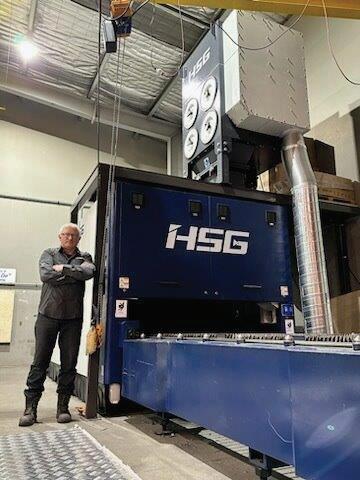
Two different widths and heights of the adapters gives the customer the option of adapting the extender crossbar to the hose diameter. By using the extender crossbars, the interior space of the energy chain increases significantly.
In addition to the hoses, other cables can also be accommodated and routed that way. With the product range of cable-friendly interior separation elements, the energy chain can be easily divided so that customers can lay out their cables and hoses as desired. Costs can also be saved with the new e-chain with extender crossbars, because instead of a large energy chain, the user can simply insert a smaller chain with extended crossbars for more inner height. www.treotham.com.au

EPIC ASC axial screw contact more reliable
When crimping, the stripped cables or cores are normally inserted into the sleeves or connectors and pressed together using a crimping tool.
The EPIC ASC axial screw contact on the other hand, is a completely new design for inserts and modules of EPIC® connectors. It enables very simple screw attachment. The axial screw contact, which can be rotated freely in the high-current module, simplifies assembly, prevents torsional stress and thus ensures contact safety between the contact and the cable.
Thanks to assembly outside the module, fitters can also tell immediately whether the connection has been screwed incorrectly. This prevents errors or failures that could be caused by insuffiicent coverage between contact and core.
The EPIC ASC axial screw contact also features a silver-plated contact surface. This ensures low contact resistances and minimum generation of heat at the contact. The touch protection provides users with maximum protection when connecting and pulling out the high-current module.
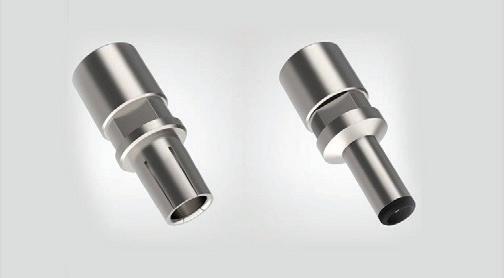
Another highly practical feature is that, for conductor cross-sections of 35 to 75 mm2, only an axial screw contact is required - for the connection an inner hexagonal spanner and a fork wrench only are sufficient.
The axial screw clamping technique enables a service-friendly connection without a special crimping tool, saves costs and is ideal for releasable connections.
www.treotham.com.au
NZ Manufacturer August 2023 / www.nzmanufacturer.co.nz 22
Rolleston Sheetmetal Engineering owner, Frank Maat (pictured) found that ToolBox laser cutting quoting software allowed him to tread the fine line between being competitive and being profitable
The alternative to a crimp contact: the new EPIC ASC axial screw contact.
Full-Face
protection with Zeta welding and grinding helmets
Leading international welding equipment manufacturer, Kemppi, has released its new Zeta range of welding and grinding helmets. The Zeta helmets set a new benchmark in full-face protection with a lightweight design and top-of-the-line visibility features.

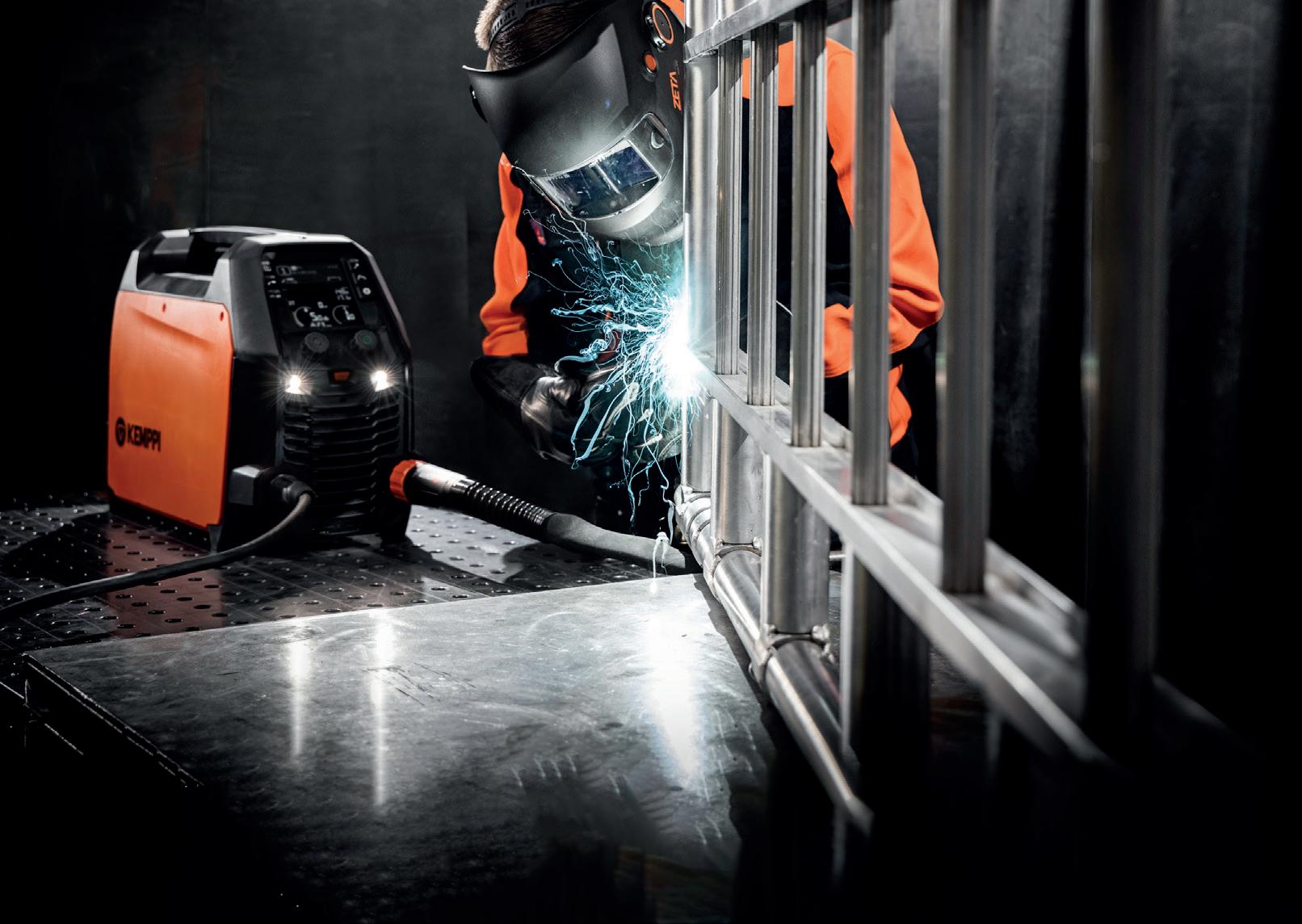
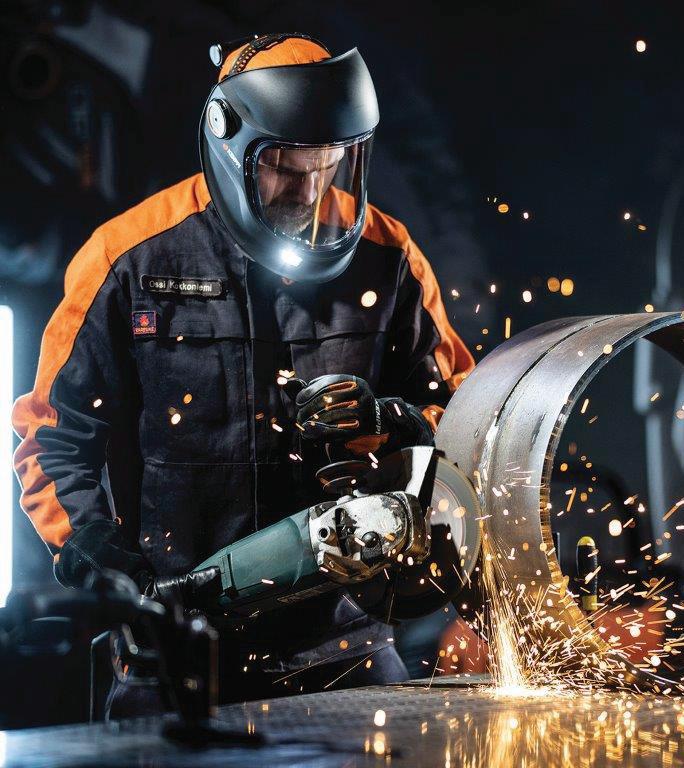
Designed for multifunctional use where the face and eyes need protection, the Zeta helmets provide an excellent work experience for welding, grinding, inspection and cutting processes.
With an emphasis on improved visibility and eye protection, the four models within the Zeta range are equipped with the most advanced auto-darkening filter for welding or a wide visor for grinding, along with many other must-have features.
Greater visibility and advanced vision features
The Zeta welding helmets have a significantly large viewing area with the ADF filter. It measures 110mm in width and 60mm in height. The Zeta grinding helmets feature a large 200 mm high visor with a 180° horizontal view for greater visibility.
In addition, the Zeta ADF is an improved version with VISION+ technology increasing the quality of vision and work accuracy. The ADF DIN 2.5 light-state means you can enjoy sharp colours and visibility through the filter when the welding arc is inactive.
Lightweight helmets
The shell construction of the Zeta helmets is strong and robust but lightweight. This, together with the
helmet’s well-balanced design, helps relieve the strain on the neck and shoulders.
Excellent balance aids comfort and work accuracy
The well-balanced, narrow-shaped design of the Zeta helmets, combined with the perfect weight distribution, offers extra comfort and endurance resulting into better work accuracy.
Integrated LED work lights
Both the Zeta G200X and Zeta W200x helmets feature integrated LED lights. The user can manually switch the LED lights off and on. Or they can select the automatic button which switches the lights off in bright conditions and then back on to help improve visibility and safety.
Conveniently designed battery pack
The battery pack is located on the neckband, which further improves the balance of the helmet. The battery pack is easy to charge using a USB charger, and you can check the power level by simply pushing the button outside the shell.
Smooth surface, improved hygiene
Designed and constructed with a smooth inner surface, the Zeta helmets are easy to clean which enables improved hygiene.
A choice of four models
Users can choose from 4 helmet models within the
range. These include the:
> Zeta G200 grinding helmet
> Zeta G200x grinding helmet with integrated LED work lights
> Zeta W200 welding helmet with automatic darkening welding filter (ADF)
> Zeta W200x welding helmet with ADF and integrated LED work lights
23 www.nzmanufacturer.co.nz / NZ Manufacturer August 2023
Workshop
Power and pulse, ready to go High performance, low weight www.kemppi.com For more information call Matt on 0220 200 626
Tools
Case Study
Sustainability software helps Fletcher Building make better decisions
Fletcher Building uses Sphera Corporate Sustainability Software to manage its sustainability planning, activities and performance and has been doing so for almost ten years. The thinkstep-anz team helped Fletcher Building set up the software, train, provided technical support and helped migrate existing data to the platform.
In this Case Study, we look at how the Sphera software is helping Fletcher Building make better decisions and engage its team in its sustainability work. We also share tips from Michael Burgess, Fletcher Building’s Group Carbon and Environmental Performance Manager, for getting the best from the software.
About Sphera corporate sustainability software
This is one of the world’s leading enterprise-wide solutions for managing and reporting on sustainability performance. The software provides data that can be used to report against all common sustainability standards and ratings, including the Carbon Disclosure Project (CDP), Global Reporting Initiative (GRI) and Dow Jones Sustainability Index (DJSI).
It is compatible with most corporate software including Microsoft Power BI and Excel.
How Sphera’s software is used to succeed sustainably
The software helps Fletcher Building manage sustainability data across its business. Fletcher Building’s business is complex. The company, which operates in New Zealand, Australia, and the South Pacific, is a significant manufacturer, retailer, home builder and partner on major construction and infrastructure projects.
Fletcher Building is committed to its purpose of ‘improving the world around us through smart thinking, simply delivered.’ As part of this purpose, the business is continuing to decarbonise, recycle, minimise waste and innovate to produce better, more sustainable products and homes.
An effective alternative to spreadsheets
Managing sustainability data in spreadsheets is impractical and inefficient.
‘You don’t need to be as big as us to reach this stage,’ says Michael. ‘Once you get past being a small-tomedium-sized business, managing your carbon data in spreadsheets just does not work.
“This is especially the case when you need to report other environmental metrics too, like waste or water. SpheraCloud sets and tracks our forward carbon reductions.’
Adding business value
The software helps the company improve its sustainability performance and identify and manage risks and opportunities. It also helps Fletcher Building meet its reporting needs and build its brand by publicly communicating its progress to operate more sustainably.
Improving data and decisions
1. Saving time and money. The software makes collecting and using data easier. The data is in one place, in a single format with controlled access. Automated bulk uploads save time too.
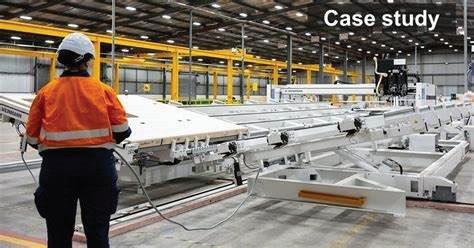
2. Shifting the focus from wrangling data to using data. Spending less time collecting data frees the Fletcher Building team to use the data to improve sustainability and business performance.
3. Supporting better, faster decisions based on better data. With software, the company can reduce human error by automating bulk uploads. It can collect more ‘granular’ data to better understand its business. And the data is ‘real-time,’ meaning that it is as up to date as it can be.
4. Engaging the business. Michael talks about ‘democratising information.’ Fletcher Building uses the Sphera software to develop simple dashboards that give business units customised information. This information can be exported through an Application Programming Interface (API) to use in other Business Intelligence (BI) tools. Relevant information encourages action.
Michael’s tips for getting the most from the software
Collecting your data
1. Centralise your data gathering. This reduces the administration load on the wider business (always appreciated!) It also improves the integrity of your data.
Making fewer people responsible for collecting data allows them to specialise in this essential task. Your data will be more consistent across your business, and you will reduce the risk of human error. Auditing your data will be easier too. Where you do not have centralised access to data, on-site users can append supporting information to their entries.
2. Automate your processes. You will save time and reduce human error.
3. Upload data in bulk. For example, many parts of your business will share fuel and power suppliers who can send you data regularly. Upload this common data in bulk.
4. Go granular. Wherever possible, get data at the site or branch level. This is where you will gain the most useful insights. For example, Fletcher Building produces data for every branch of its PlaceMakers business. Bulk uploading makes this task easier.
Using your data
1. Customise your insights. People are more likely to understand and act on information that is relevant to them. Set up simple, live dashboards that provide this information.
2. Engage your business. Appoint users across your business. Consider league tables (Branch A’s GHG emissions to turnover is out-of-the-park fantastic!), benchmark performance to best practice, and help everyone learn from one another.
3. Link sustainability reporting to financial planning. Use your insights to support the projects that will make your business more sustainable. Invest where the impact is greatest and the opportunity cost of acting is lowest.
4. Chart a path ahead. Fletcher Building has a verified Science Based Target (SBT). The company has committed to reducing its Scope 1 and 2 greenhouse gas emissions by 30% from its baseline year (2018) by 2030.
Around 130 company-wide projects support this target. The Sphera software helps Fletcher Building understand, track and – importantly – forecast the impact of each project at its SBT target year.
It also lets the team factor in the impact of new projects and model the effects of moving to lower-carbon electricity grids.
NZ Manufacturer August 2023 / www.nzmanufacturer.co.nz 24
Developments
Technology key to reducing injuries, easing construction industry challenges
Work site injuries, labour costs, and a skills shortage are just some of the challenges the construction sector could overcome if the industry was more open to embracing technology, says the CEO of a leading safety and work site management platform.

Ben Leach, Founder and CEO of HammerTech, has seen first-hand how technology can help increase productivity and offset many of the increasing costs and challenges the industry is facing. “In our experience in New Zealand, Australia, and the US, some companies and subcontractors are reluctant to adopt new processes, especially when it comes to incorporating technology. Many just flat out refuse a new process or platform, especially if it’s not easy to use.”
He says the use of technology is key to attract new talent to construction and future growth across all sectors, yet the construction industry continues to lose out to other industries who are moving faster. “There are significant opportunities for Kiwi companies in the construction industry who become early-adopters of evolving technology to help increase productivity, drive higher quality work, and make work sites safer for their teams.
“The increase in workplace injuries is an example of where the right construction-specific technology is proven to deliver significant benefits that serve the whole construction ecosystem — even subcontractors,” he says.
Injury prevention
WorkSafe statistics for the New Zealand construction industry show injuries resulting in more than a week away from work totalled 5,880 in 2022 (up from 5,826 in 2021). There were 12 fatalities in 2022 and 12 in 2021.
“Access to accurate safety data means a company can identify what injuries are occurring and put measures and policies in place to help reduce the occurrence of these instances.” For example, says Leach, data about the prevalence of hand injuries can highlight to employees the extent of the problem, provide greater awareness of how to prevent these injuries, and encourage updated policies to bring about change.
HammerTech is the market leader in construction site operations and health, safety and environment (HSE) management software in Australia. It entered the New Zealand market in 2020 and is undergoing significant expansion with leading construction companies such as Mansons TCLM, LT McGuinness, and Maycroft Construction using its platform.
The HammerTech platform holds all health and safety data in one system and enables decisions to be made with real time visibility across work sites.
Barriers to change
There are numerous barriers to technology uptake in the construction industry, from reluctance by tradies and sub-contractors to adopt new technology through to limited budgets to implement new tech tools.
PRODUCTIVITY PREDICTIVE MAINTENANCE

Leach says other industries are moving and harnessing new technology, and construction needs to do the same. “AI tools like ChatGPT are highly disruptive and can be seen as a threat to many industries and peoples’ livelihoods.
Whilst there are significant opportunities and benefits from this technology, what we need to focus on instead is much simpler and doesn’t involve job loss but rather simplifying existing burdensome processes like paperwork burden. This gives time back to everyone plus safety and construction experts can focus on improving standards through training, coaching and analysing trends.”
Deloitte’s State of Digital Adoption in Construction Report 2023 found the main barriers to technology uptake by companies was lack of digital skills in the workforce (44%) followed closely by budget limitations and lack of confidence in skills.
“With the growth in vertical construction in New Zealand due to the move towards higher density precincts and neighbourhoods, there is an opportunity as construction employees upskill to adopt technology and provide those entering the workforce with the opportunity to utilise new ways of working and new technologies.
This is what will attract the tech-native younger generation.”
Insight, capability, and change
HammerTech is focussed on making work sites safer and more productive, as well as supporting companies to meet their changing health and safety needs. “Having more accessible information allows managers to analyse health and safety and operational performance in real-time which enables better risk and operational management,” says Leach.
HammerTech’s digital platform and its reporting capability provides insights that help to significantly reduce the time and expense of handling occurrences such as incident reports, ACC claims, and client disputes.
“Having everything to do with safety and site operations in one place saves the hassle of multiple systems because too many apps and platforms restrict growth and takes up valuable time. Producing quality data for reporting purposes is essential and going digital is the easiest and most efficient way to do it.”
INDUSTRY 4.0 RENEWABLE INDUSTRY WORKSHOP TOOLS
Advertising Booking Deadline – 7 September 2023
Advertising Copy Deadline – 7 September 2023
Editorial Copy Deadline – 7 September 2023
Advertising – For bookings and further information contact:
Doug Green, P O Box 1109, Hastings 4156, Hawke’s Bay
Email:
Editorial material to be sent to :
Doug Green, P O Box 1109, Hastings 4156, Hawke’s Bay
Email: publisher@xtra.co.nz
Tel: 06 870 9029
At NZ MANUFACTURER our aim is to keep our readers up to date with the latest industry news and manufacturing advances in a tasty morsel, ensuring they do not get left behind in the highly competitive and rapidly evolving manufacturing world.
Opinion Manufacturing Profiles
Letters to the Editor
Politics of Manufacturing
Trade Fair World
Diary of Events
World Market Report
Q/A
Export News Machine Tools
Business Opportunities Commentary
As I See It Business News Appointments
Around New Zealand Australian Report
New to the Market
Lean Manufacturing Equipment for Sale
Recruitment
Environmental Technology
Manufacturing Processes
www.nzmanufacturer.co.nz
25 www.nzmanufacturer.co.nz / NZ Manufacturer August 2023
NZ MANUFACTURER FEATURES
Issue
SEPTEMBER 2023
Developments
The surprising ally shining a light on manufacturing and industrial sector
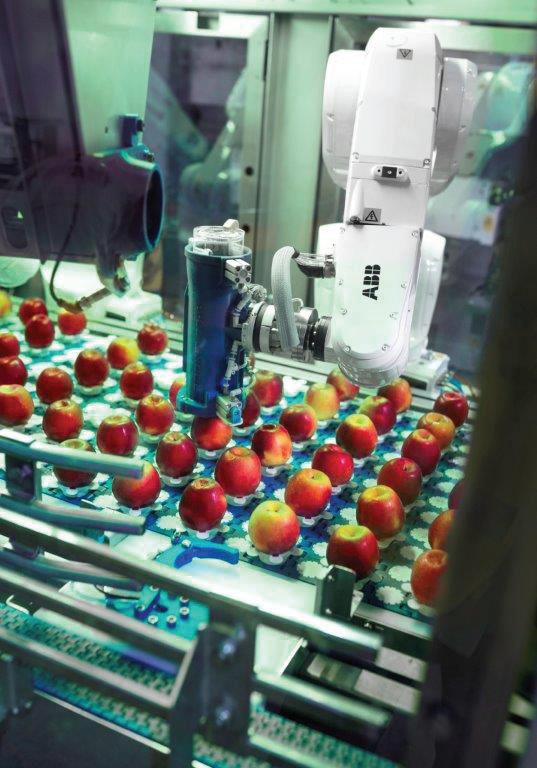
Naked Creative, a surprising boutique marketing agency based in Invercargill, is making significant waves in the New Zealand marketing scene by successfully partnering with heavy industry companies and supporting their growth and international expansion.

In a refreshing departure from the norm, Naked Creative has proven that big hitters in the marketing world can emerge from unexpected places, challenging the notion that major cities are the sole hub for marketing expertise.
Despite their smaller size, Naked Creative has established themselves as a formidable force in the industry.
Their unique approach and expertise have allowed them to carve out a niche in working with primary sector, food handling and manufacturing, engineering, and logistics companies.
Through their innovative strategies and tailored campaigns, Naked Creative has become the go-to agency for these industries, providing targeted and effective marketing solutions.
Naked Creative Chief Executive Erin McCall acknowledged the advantages of being a boutique agency based in Invercargill.
“It’s actually a blessing being boutique, and with a head office in Southland as we have significant primary industry and industrial companies here. It’s what we know.
“We have transferred that knowledge to lots of organisations throughout New Zealand, and our size has allowed us to be nimble and move quickly,” she said.
Naked Creative’s collaboration with industrial clients throughout New Zealand has earned them a reputation for delivering exceptional results.
They have displayed a keen understanding of the specific needs and challenges faced by companies in these sectors, playing an instrumental role in supporting their growth and facilitating successful expansions into international markets.
NZX-listed engineering and industrial automation innovator, MHM Automation has worked with the agency for many years.

MHM Automation CEO Richard Rookes said the partnership they have with Naked Creative was a valuable one.
“The team take the time to really understand what we do and why we are different, and they invest in telling our story. We consider them an important part of our team,” he said.
Naked Creative Director Carla Forbes has been the driving force behind the agency’s success with her leadership propelling Naked Creative to the forefront of the New Zealand marketing scene.
“We are thrilled to have the opportunity to be trusted and to work closely with a broad range of industrial and primary sector organisations. It is a privilege to be part of their team to support their growth and international expansion,” Forbes said. She also commented on the team she works with and their process to ensure client satisfaction.
“Our team has some extraordinary talent, and they are really dedicated.
“We start by digging really deeply into the organisations we work with, and this discovery process gives us a really meaningful understanding of these industries.
“We then become part of the team, and with this knowledge, we have been able to provide targeted marketing solutions that have made a real impact,” Forbes said.
Naked Creative’s ability to adapt and innovate has been a key factor in their success.
Whilst a lot of what they do is business to business and very specific markets, they approach heavy and primary industry marketing with fresh perspectives and creative thinking.
The proof is in their outcomes. They have helped companies establish their brands, increase market share, and reach new audiences, domestically and globally.
As a boutique agency based in Invercargill, Naked Creative’s achievements in heavy industry marketing in New Zealand is commendable.
Their success serves as a testament to the talent and capabilities present in regional areas, highlighting that big hitters in the marketing world can emerge from unexpected places.
Looking ahead, Naked Creative aims to continue their growth trajectory and expand their services to cater to an even broader range of heavy industry clients.
With their proven track record and commitment to delivering outstanding results, they are poised to remain at the forefront of the New Zealand marketing scene.
For media enquiries or more information, please contact Naked Creative Director Carla Forbes, phone 021 678 682 or email carla@ nakedcreative.nz
NZ Manufacturer August 2023 / www.nzmanufacturer.co.nz 26
Naked Creative Director Carla Forbes (left) and Chief Executive Erin McCall (right).
The Last Word
Electrical apprentice challenge back for 2023
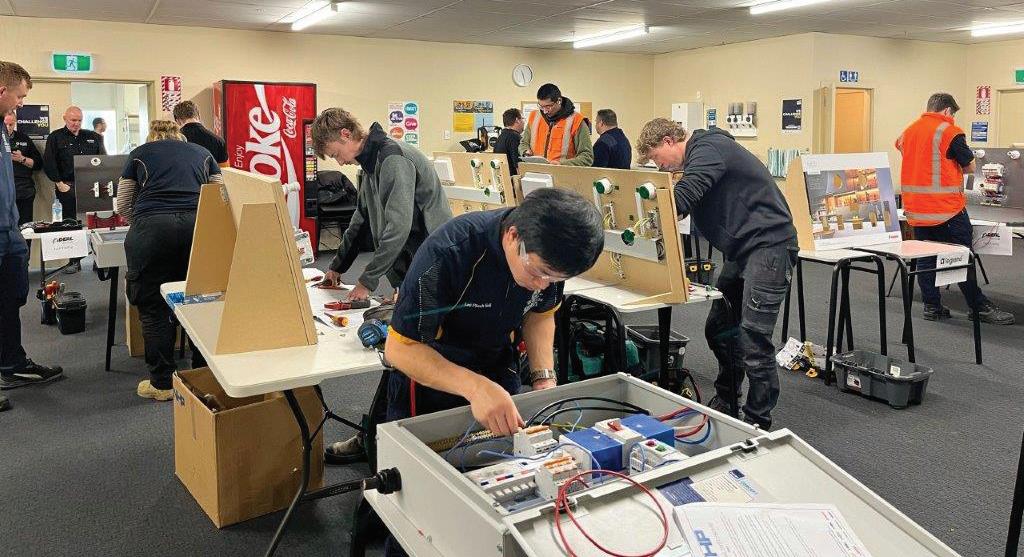
With the annual challenge to find New Zealand’s best electrical apprentice back for 2023, the winners of the 2022 challenge have some sage advice for those considering entering, and for the employers of the young sparkies about to be put to the test.

Exposure to all the varied elements of the industry that the competition provides is invaluable, says Mathew Masters, who won the Industrial Award in last year’s Master Electricians Apprentice Challenge, sponsored in part by Schneider Electric.
“Taking part in the challenge is a rewarding way to upskill. The team at Dalton Electrical supported me with my learning going into it, and I was given opportunities many apprentices wouldn’t get to touch.
“There’s a lot I didn’t know about the expanse of the industry when I came into it; I just wanted to do something hands-on after university, and now I’ve found what I’m good at.
“I come from a programming background and the challenge was a catalyst for me to learn my way up. People want homes that run off their phones, but automation is becoming applicable in so many contexts now – including industrial – and I’ve been able to see the technical side of it, which opens up a whole new space in the electrical industry for me to explore.”
Mathew’s advice for young people is “not to be afraid of the trades,” a sentiment shared by Palmerston North-based Thomas Mitchell, who recently completed his apprenticeship with Hedley Electrical and was the Domestic/Commercial Award winner in the 2022 Challenge.
“I left school with an Excellence in NCEA but wasn’t overly excited about any of the careers that seemed to stem from university education. I came up against a bit of stigma about the trades being held in less esteem as a viable professional path, but going straight into an apprenticeship has been the best thing for me.
“The field is so broad that the work covers everything from automating people’s homes to programming
robots in a factory. As we move towards a more sustainable world with more complex technological advancements the industry is going to adapt and grow, and I think the work electricians do will become even more central to the way we live.”
Schneider Electric is passionate about front-footing the future of home energy management and proud of its ongoing sponsorship of the Master Electricians Apprentice Challenge, which the company views as an investment in upskilling and supporting the industry.
The module it’s sponsoring this year will have a completely new design that ensures apprentices are exposed to the world of home automation amid growing uptake of digital solutions for the domestic sphere and living spaces.
Mathew Lawrence, General Manager of Operations at Master Electricians, says, “Master Electricians is grateful to Schneider for being a sponsor of the Master Electricians Apprentice Challenge and contributing to a module that provides an opportunity for electrical apprentices to test their skills against one another.
“It gives them exposure to the latest cutting-edge technology in home automation, and the module provides a great simulation and demonstration of how Smart Home automation is constantly evolving, which requires apprentices to constantly learn and adapt to the latest innovations.”
The importance of sponsorship shines through in the Challenge – making it accessible to all young sparkies – and the support of employers and host organisations also leaves a lasting impact.
Mathew Masters felt generously supported by his team in the lead up to his participation, and he says this was crucial in bringing that extra edge to the competition. “Dalton Electrical has had an apprentice win the Master Electricians Apprentice of the Year Challenge several times before, which is a real source of pride for me and the team.
“All the entrants were given a guideline so we knew what would be expected of us, and Dalton helped me apply myself to areas of our field that I’m less proficient in and introduced me work I was unfamiliar with.”
Dennis Tan, also an apprentice hosted by Dalton Electrical, came away from the Challenge with the Initiative award. This is based on how finalists conduct themselves in a competition setting and the initiative they show towards health and safety. Dennis is excited about how solar will shape the future of the industry, and says the breadth of the challenge could see some of 2023’s participants discover an area of the field they have an affinity for that they weren’t exposed to before.
Thomas Mitchell agrees employer support is key, noting how he was championed by the Electrical Training Company (Etco) and the team at Hedley Electrical, with his boss driving to collect him from a Hamilton job so he could compete in the Palmerston North regional challenge.
“I’ve learned a lot about my ability to problem solve and I’ll definitely move forward from this with more confidence. The Apprentice Challenge was a really inclusive environment, with competitors offering encouragement and advice to one another, and I had a colleague come up to Auckland to support me in the finals. It was a rewarding experience and was free to enter! Why wouldn’t you?”
The competitions are held across 13 locations in New Zealand, with preliminary regional rounds starting in June and the finals taking place in Auckland in late August. There will be spot prizes as well as prizes for the top competitors from each preliminary event. The top five national competitors from each division (Domestic/Commercial and Industrial) will go to the finals for an all-expenses-paid trip to battle it out for the title of Master Electricians Apprentice Challenge winner.
For more information about the Master Electricians Apprentice Challenge visit meapprenticechallenge. co.nz.
27 www.nzmanufacturer.co.nz / NZ Manufacturer August 2023


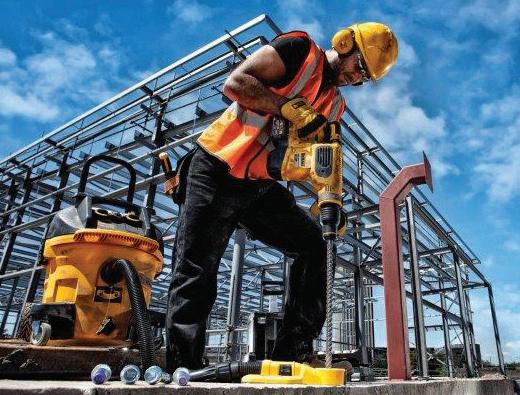

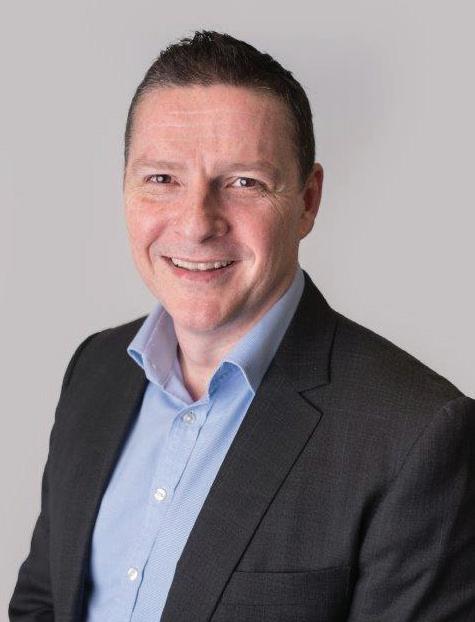
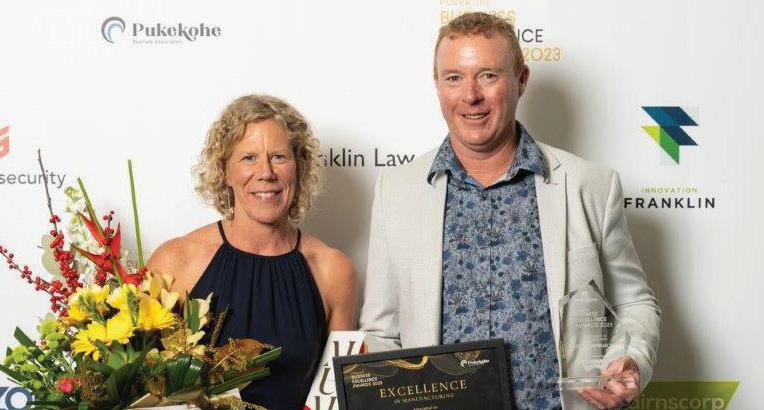

NZ Manufacturer August 2023 / www.nzmanufacturer.co.nz 28 Join with... SUCCESS
focused on
Manufacturers














































































































































